The Bordeaux hail trail, News Part II
Posted by Gavin Quinney on 1st Jul 2022
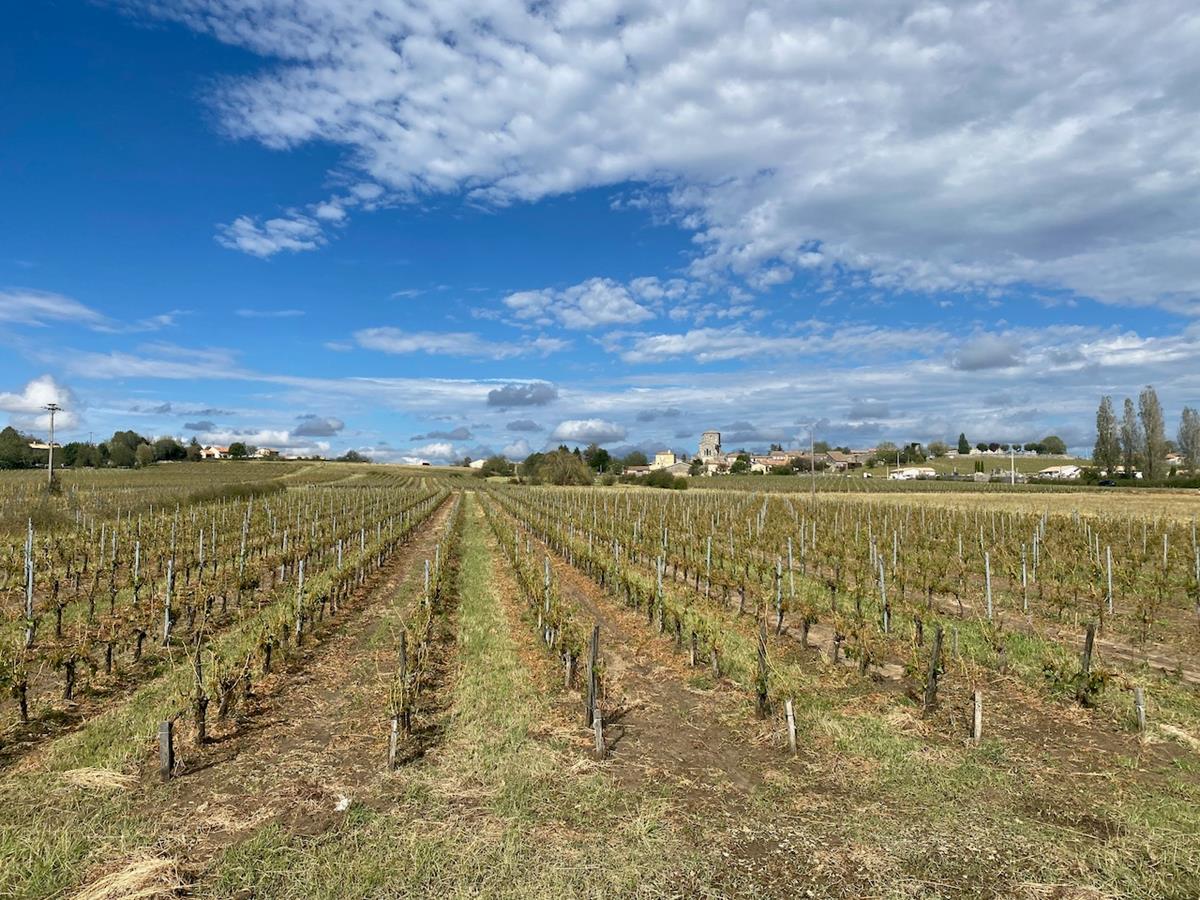
Welcome to the second part of this month’s newsletter. If you missed the June photo journal, you can find it by clicking this link.
This photo journal focuses on the hailstorms in the Bordeaux region on the evening of Monday, 20 June, as it merits a separate piece from the comings and goings at Château Bauduc. The impact of hail on vineyards is almost always localised, and the damage variable from one small area to the next. As we know ourselves from May 2009 and August 2013, sometimes your luck just isn’t in. This time we were more fortunate but you always feel for those that have been hit.
All the best
Gavin & Angela Quinney
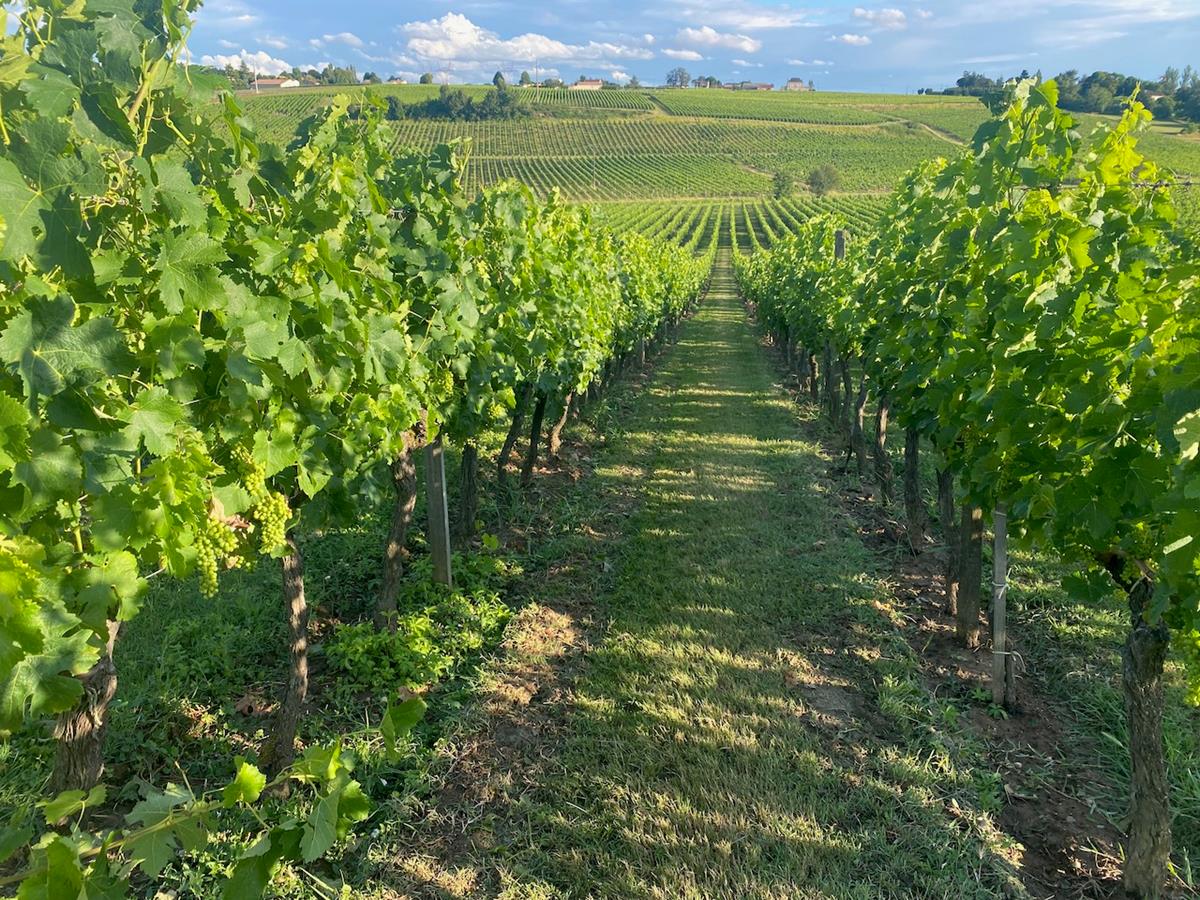
As an example, up top is a vineyard at Saint-Gervais on 23 June, on the road from Saint-André-de-Cubzac to Bourg, which runs close to the Dordogne river at the point where it merges with the Garonne to form the Gironde estuary. Above, for contrast, is a vineyard a few kilometres away near Bourg.
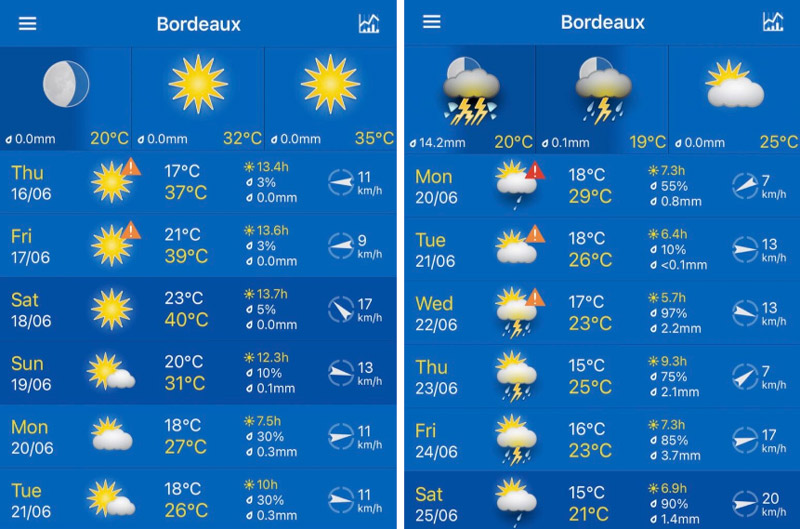
The Saturday before – the 18 June 2022 – was a scorcher, and it often follows that after a heatwave you know what’s coming. Even when storms are not in the forecast a few days earlier.
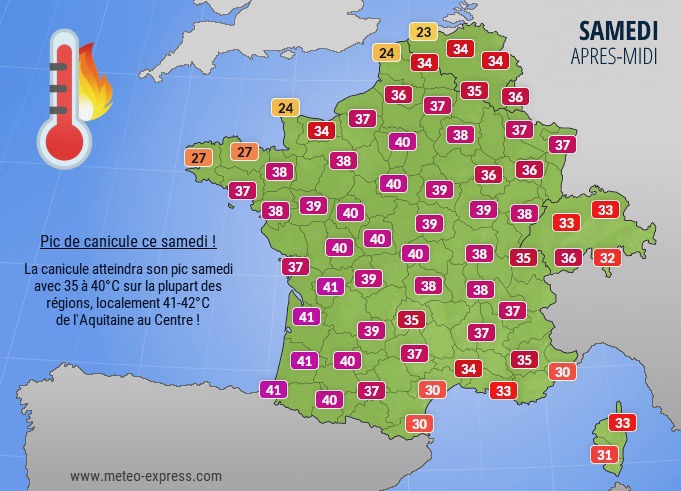
Canicule – heatwave – is a word we’re getting used to. Low 40s in mid-June in the South West of France?
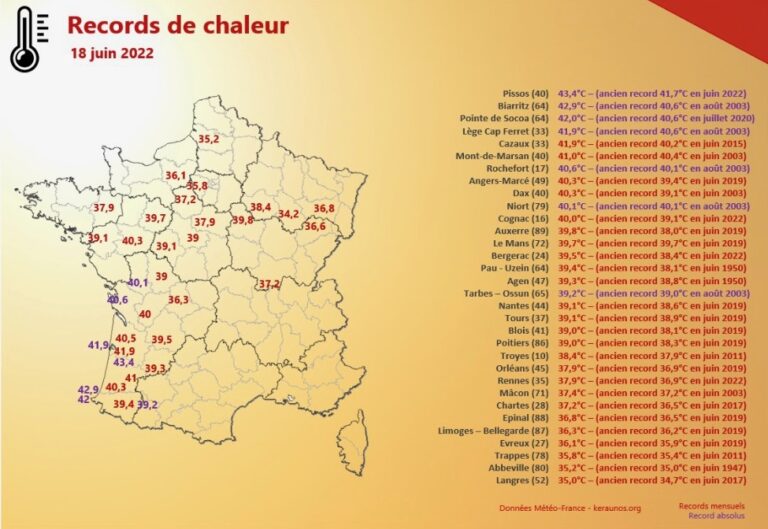
Cap Ferret on the coast – on a straight line from us to the Atlantic – hit 41.9˚C on 18 June. A record. Biarritz a whopping 42.9ºC, albeit briefly.
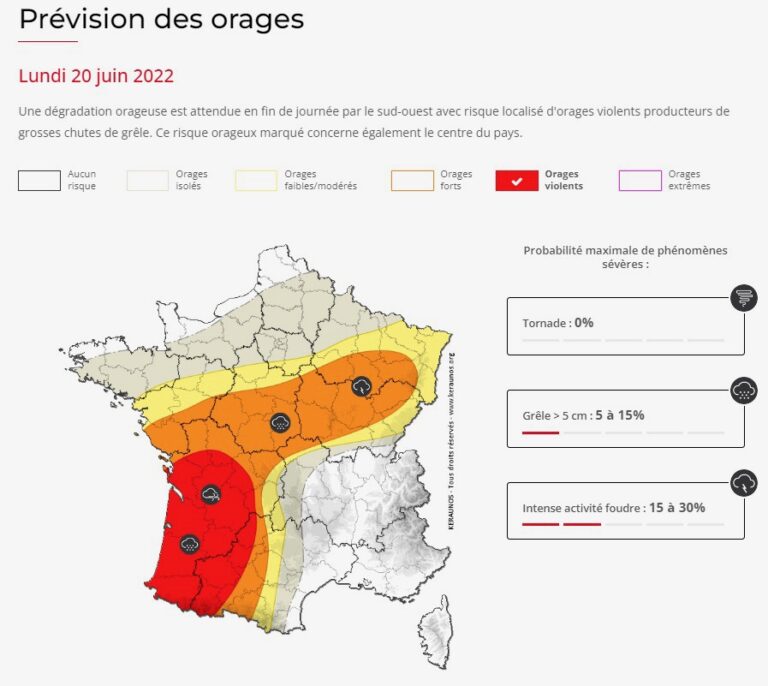
Sunday was warm too but by then we were more concerned about what Monday would bring. The dreaded G-word – grêle, or hail – mixed in with orages, or storms.
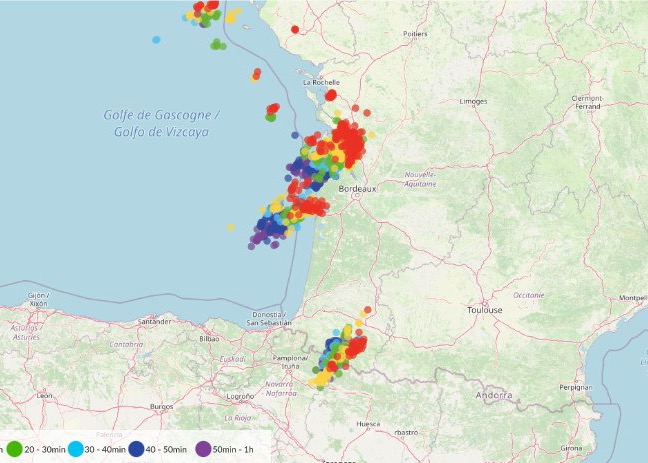
You can subscribe to apps, though I often refer to a short list of meteo (forecast) accounts on Twitter. Search list:gavinquinney/meteo in the Twitter search box for the top and latest tweets. (It’s easy to create your own lists, by the way, and that’s often the best way to view them, eg list:gavinquinney/wine is another.)
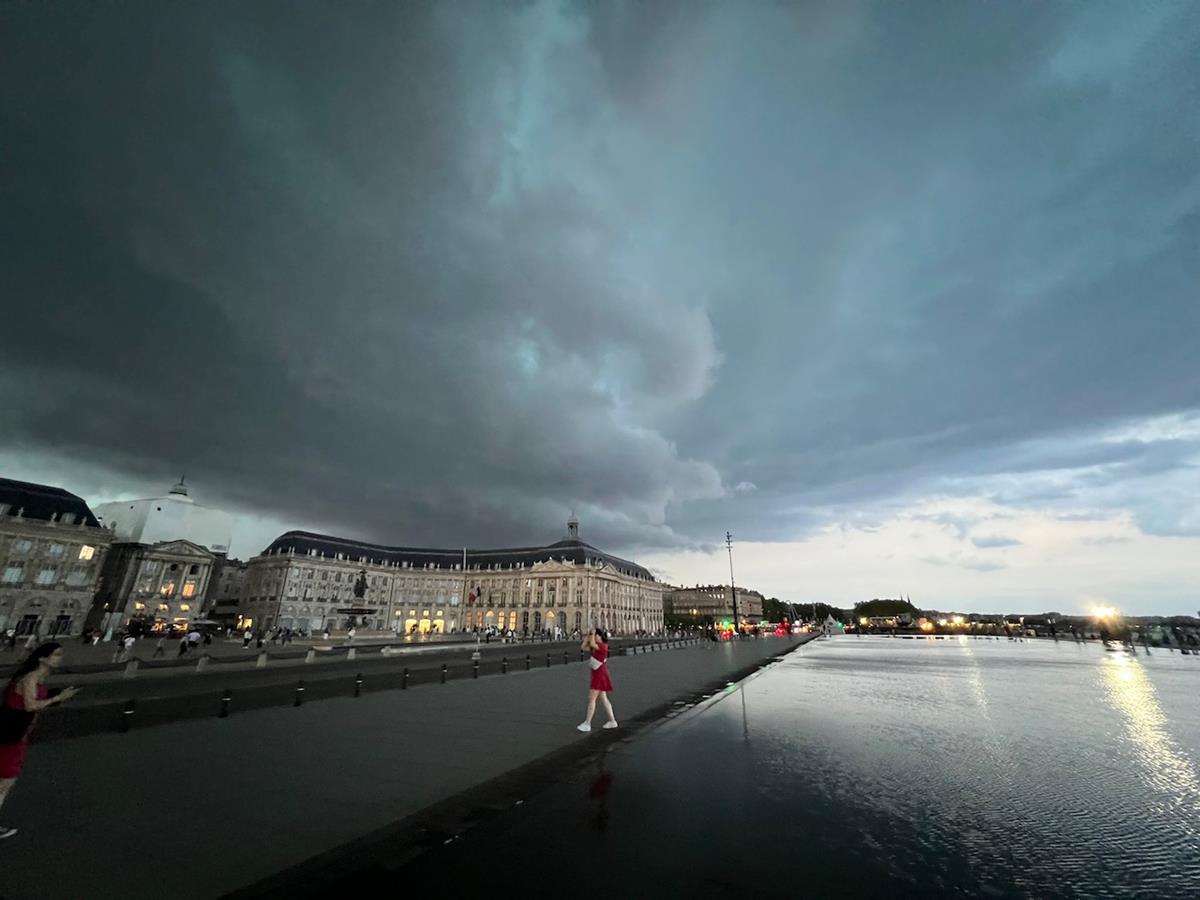
Nasty looking clouds near the miroir d’eau in Bordeaux, on the quays by the Place de la Bourse. Photo @Mariion_M_ on Twitter.
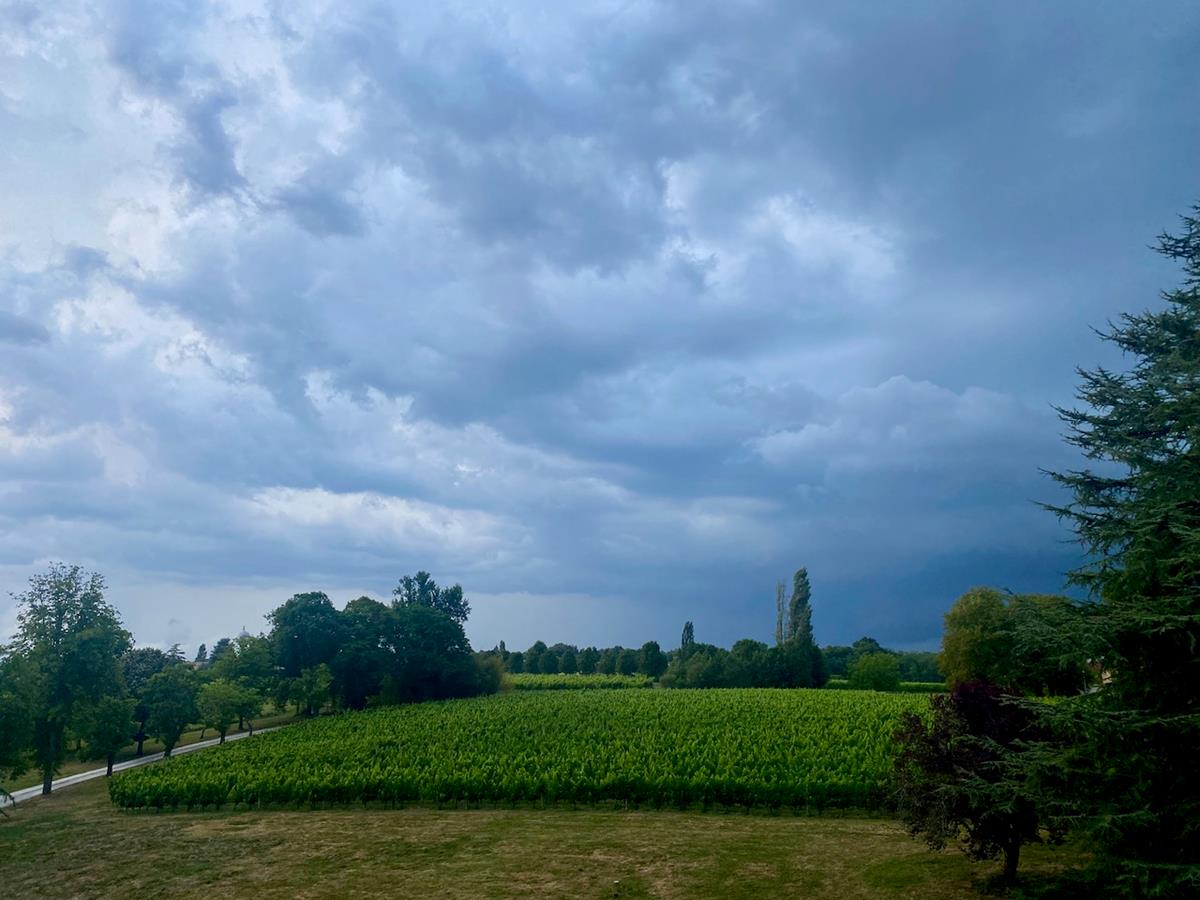
At Bauduc it was unsettled at 9.30pm but not alarming. The storms were to pass by to the north of us.
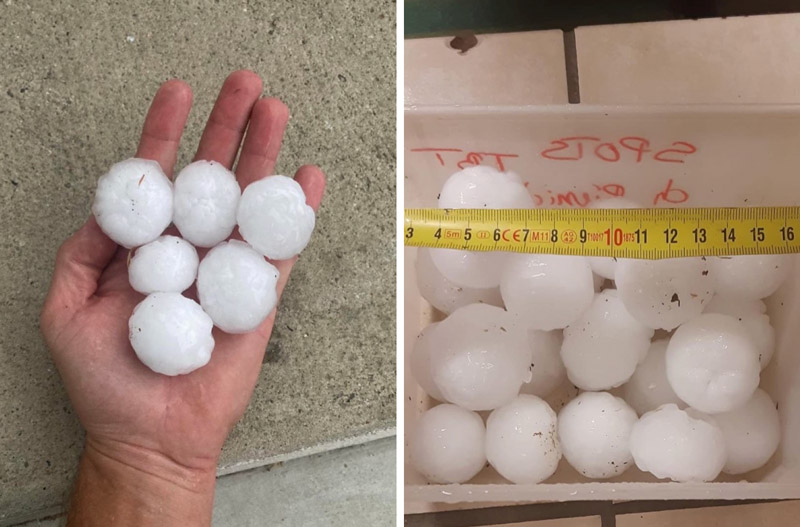
Hail stones from the evening of 20 June, Bordeaux.
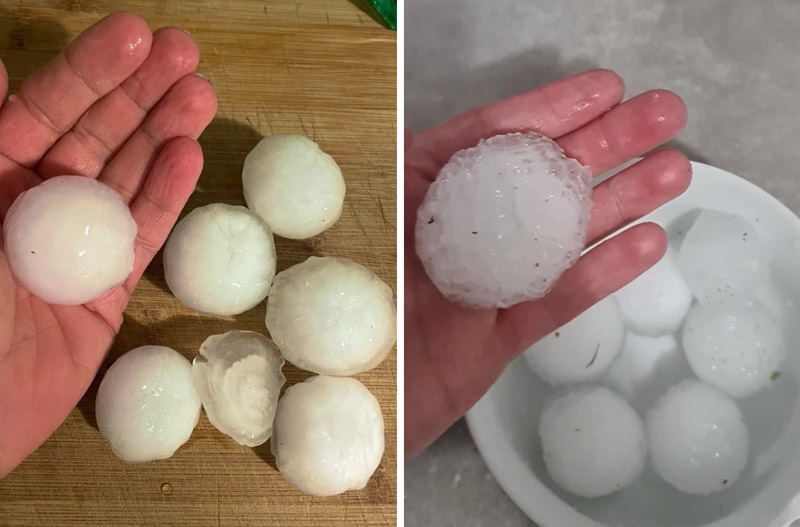
Bordeaux hailstone images via @ClubAssDentaire @Plopa @TassiepaS @AyalaKoda
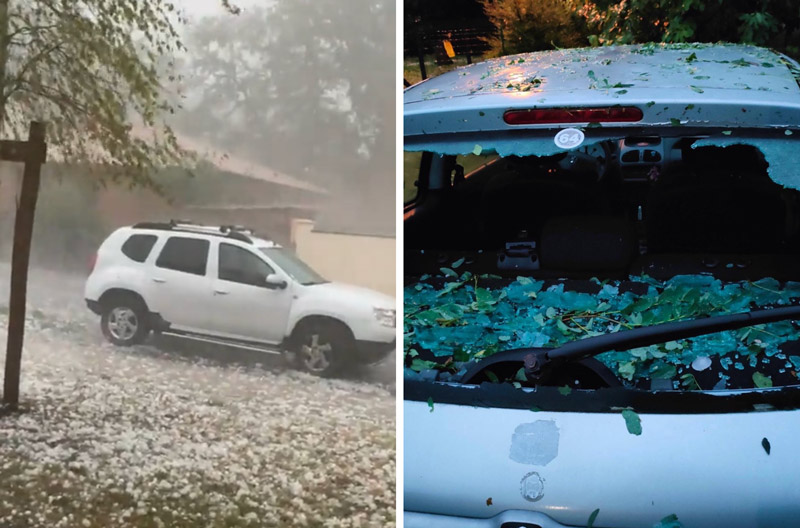
Via @Remediius_ and @Thomas________3.
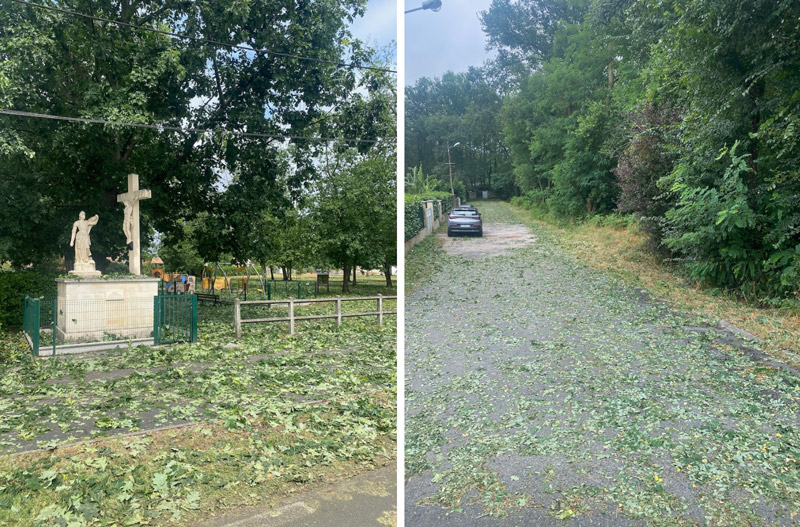
The following morning I happened to be near Margaux, at the southern end of the Haut-Médoc, north of the city of Bordeaux. It wasn’t hard to see there’d been some hailstorms overnight, such as at Parempuyre on the left, and Ludon-Médoc on the right. Locals were more concerned with the damage to their roofs, cars and other property, naturally enough.
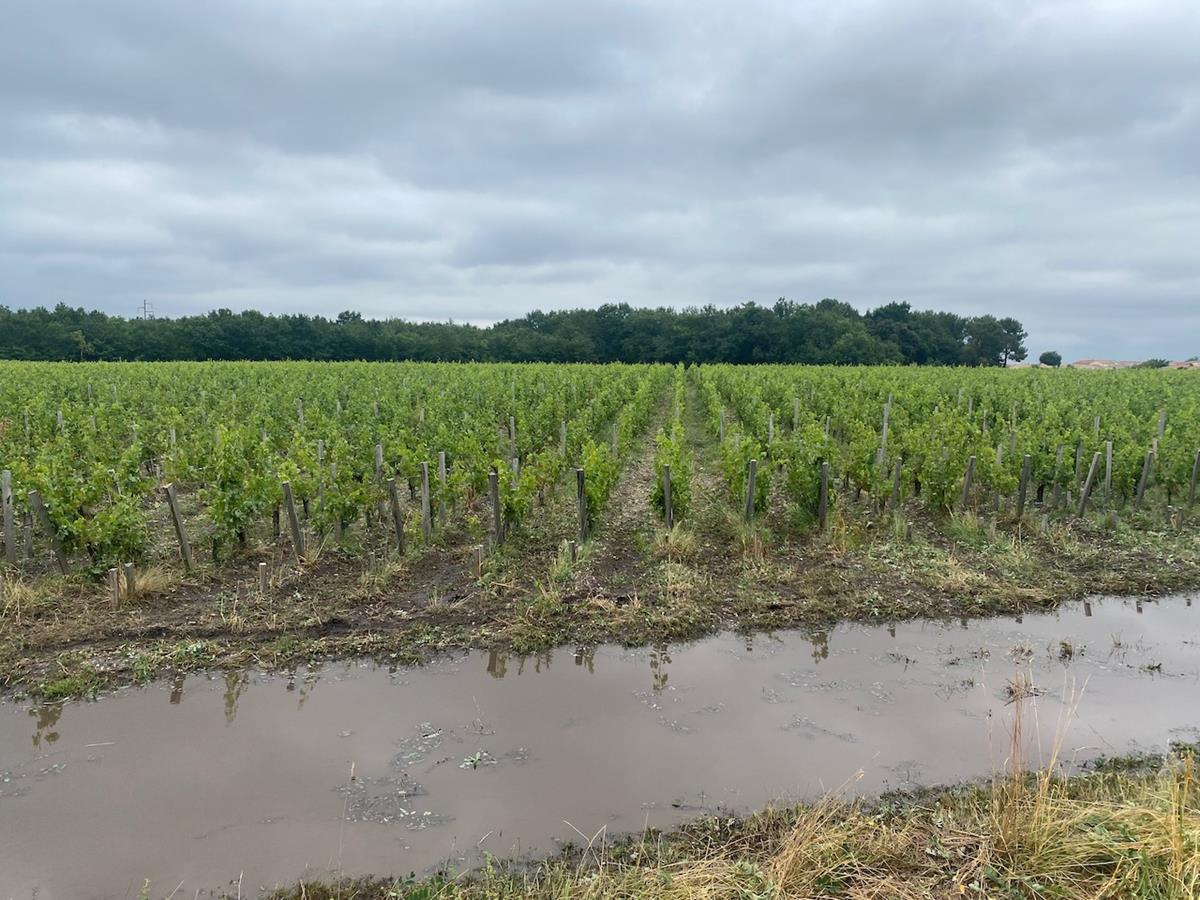
Fairly bedraggled vines and a stream of melted hailstones the morning after, probably mixed in with some heavy rain, at Ludon-Médoc. The Haut-Médoc is the large appellation which stretches some 60km along the left bank of the Gironde, from the suburbs to the north of Bordeaux, to up above Saint-Estèphe around Saint-Seurin-de-Cardourne.
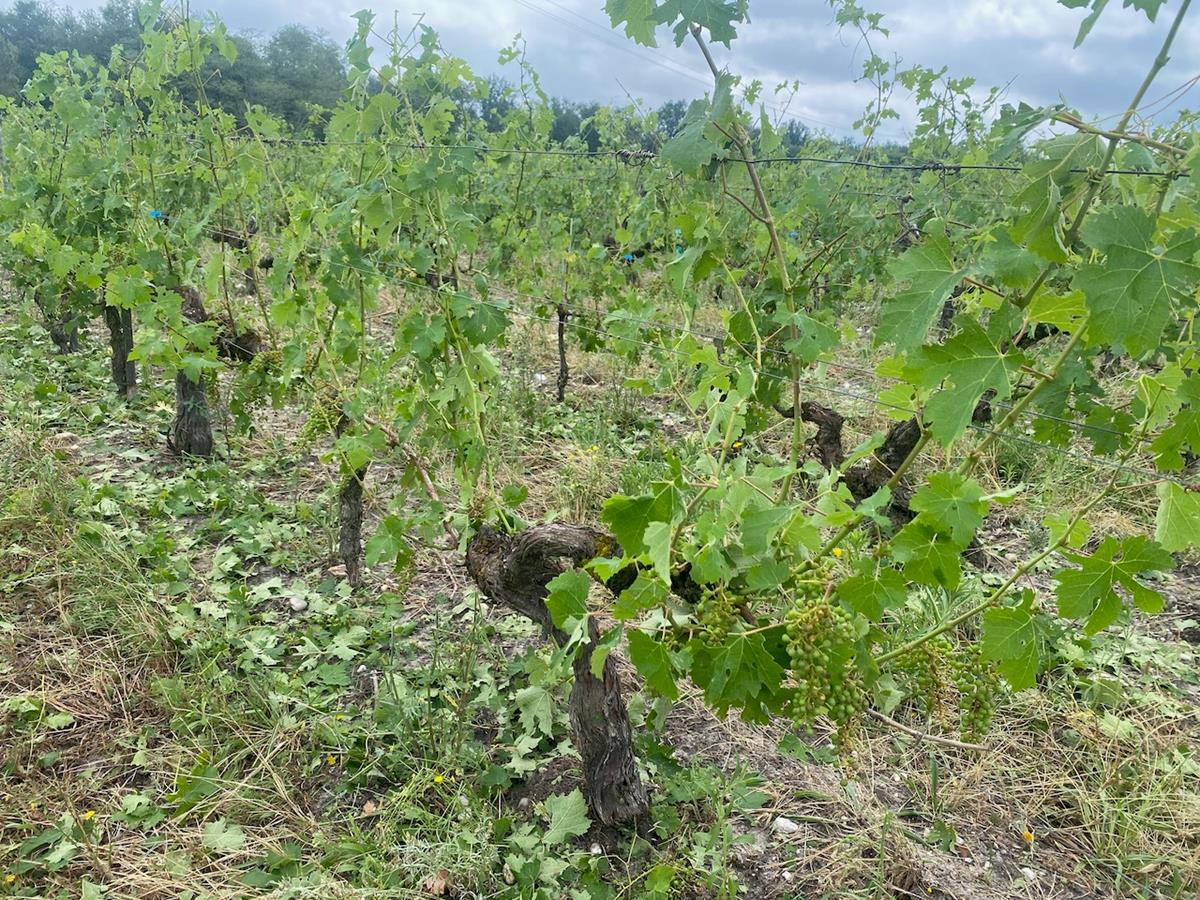
The vines at the southern end of the Haut-Médoc had been hit, though spasmodically. This was near Parempuyre.
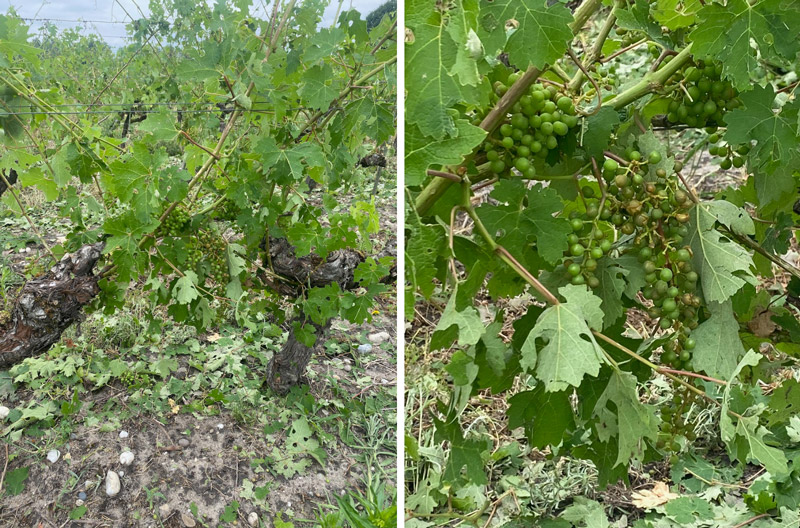
In my amateurish experience, these certainly gave the appearance of having been hit by large, round hailstones that fell from the sky, rather than being blasted by smaller or jagged hailstones in stronger winds. Lots of leaves on the ground but fewer shredded leaves. And the small, recently formed grapes – larger than peas – damaged and bashed. Not quite trashed but a devil to deal with if rot subsequently sets in.
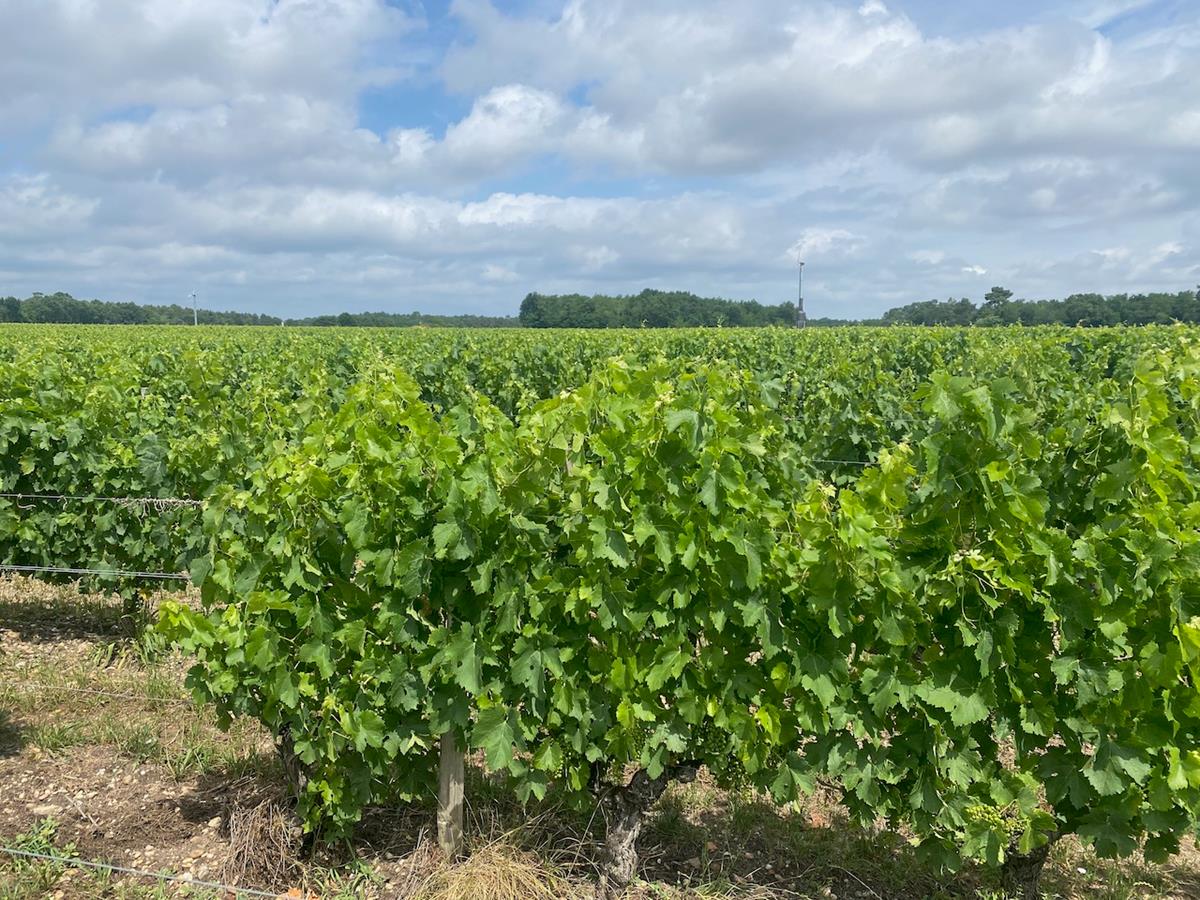
As I said the Haut-Médoc in the southern part was hit spasmodically. This was in the adjacent commune, a few kilometres away at Le Pian de Médoc: untouched.
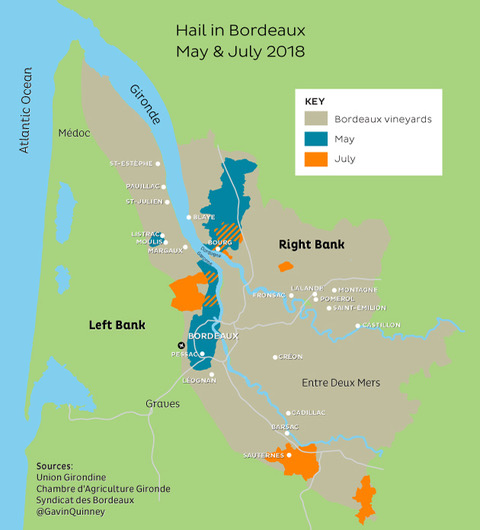
This part of the Haut-Médoc, at the end near Bordeaux, suffered hailstorms in 2018.
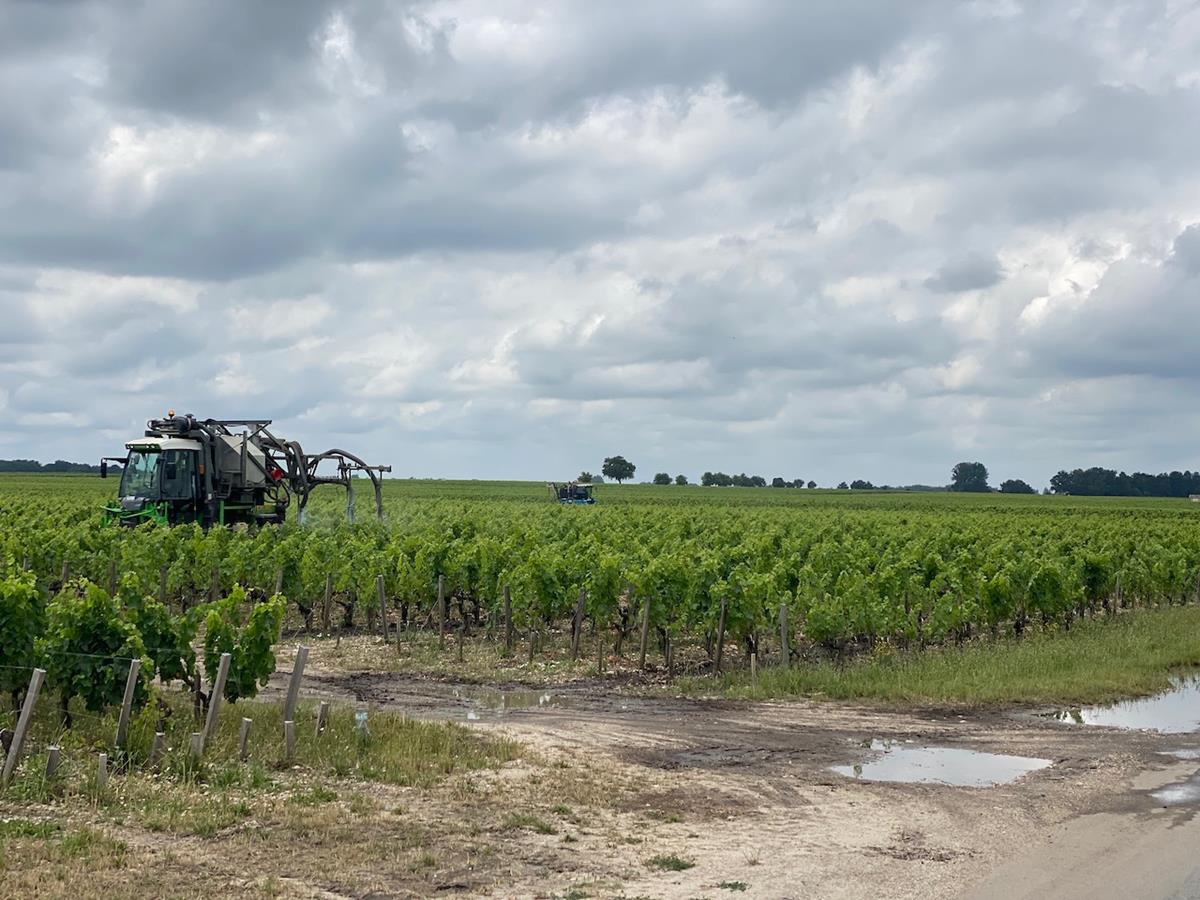
Tractors and machines were out treating the vines everywhere after the storm. For hail damaged bunches that would mean using a product that could prevent any rot from taking hold.
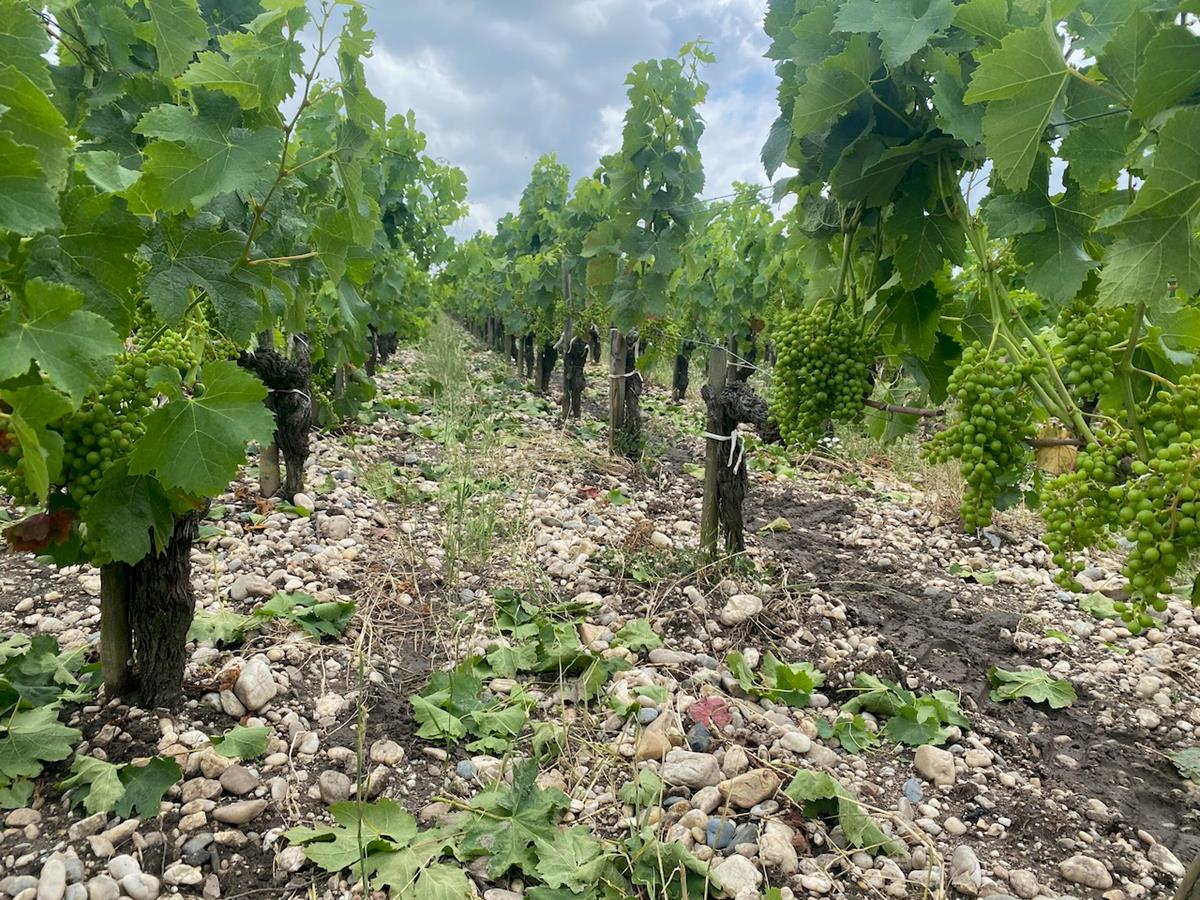
From the road, hail affected vines could be spotted by leaves lying on the ground. Not to be confused with the intentional work of removing the leaves around the fruit zone to aid later ripening, as above with these Merlot vines in Saint-Julien.
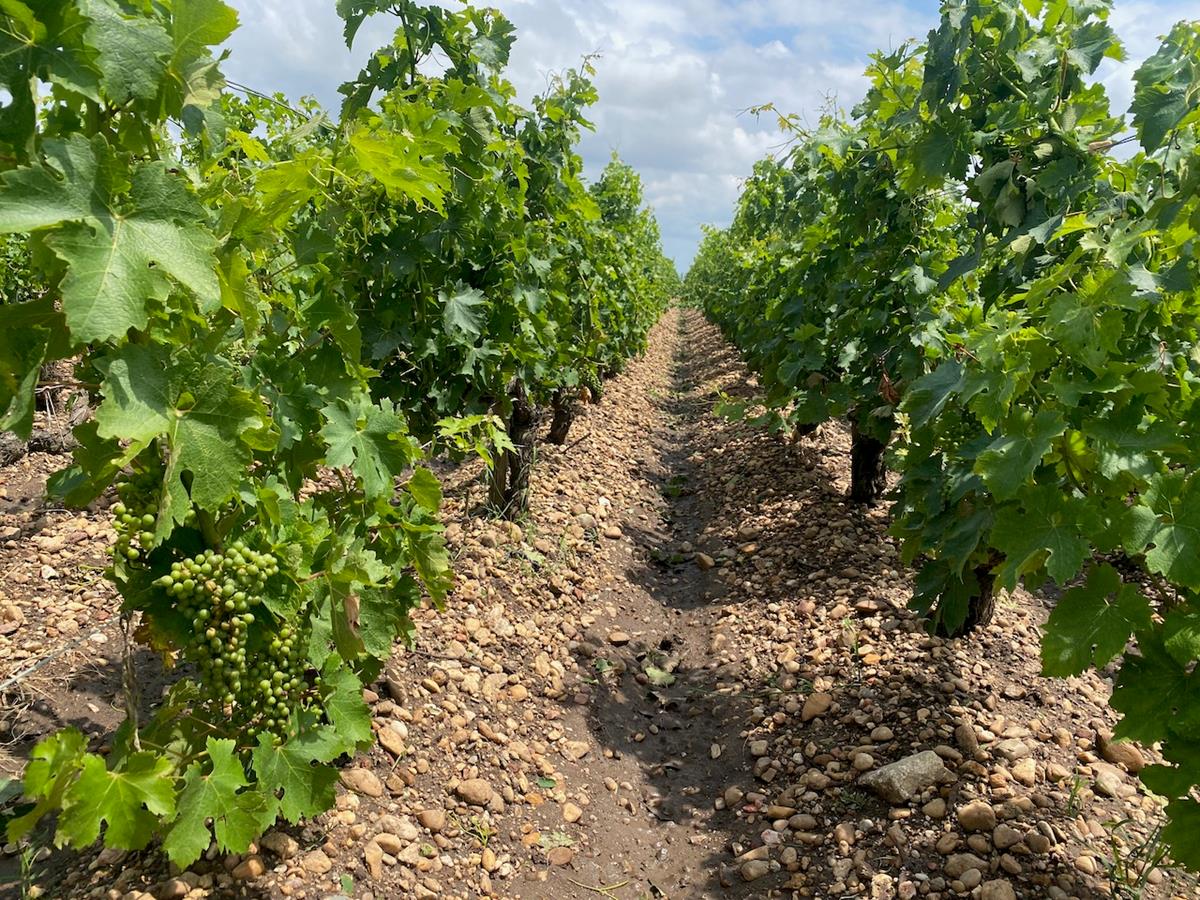
At the time, I didn’t realise that there were two corridors of hail, one in the south and another in the north of the Haut-Médoc. Then I spotted these gently bashed bunches in St-Estèphe.
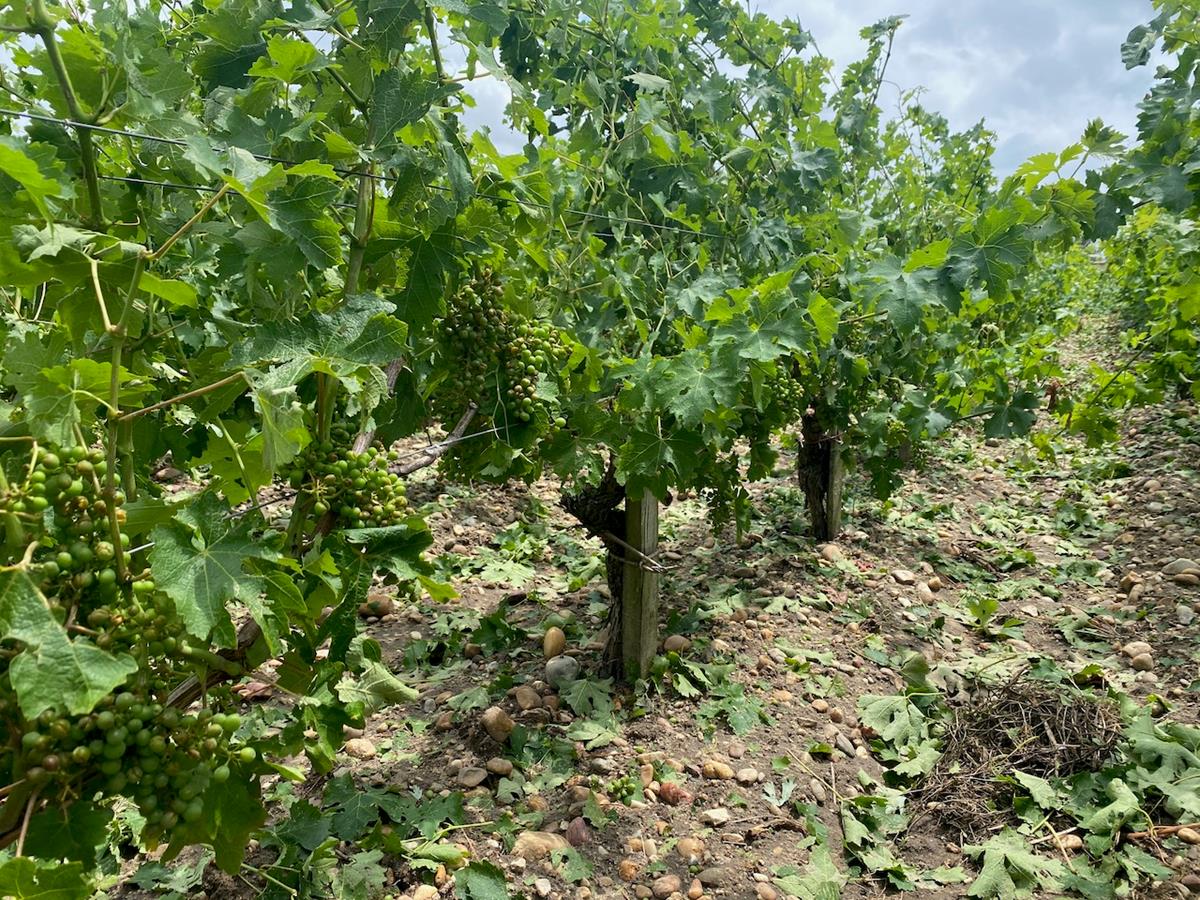
Around the village of Saint-Estèphe there was some considerable damage, and in the vineyards beyond. It will be interesting to see how these vines and grapes evolve over the last three months of the growing season.
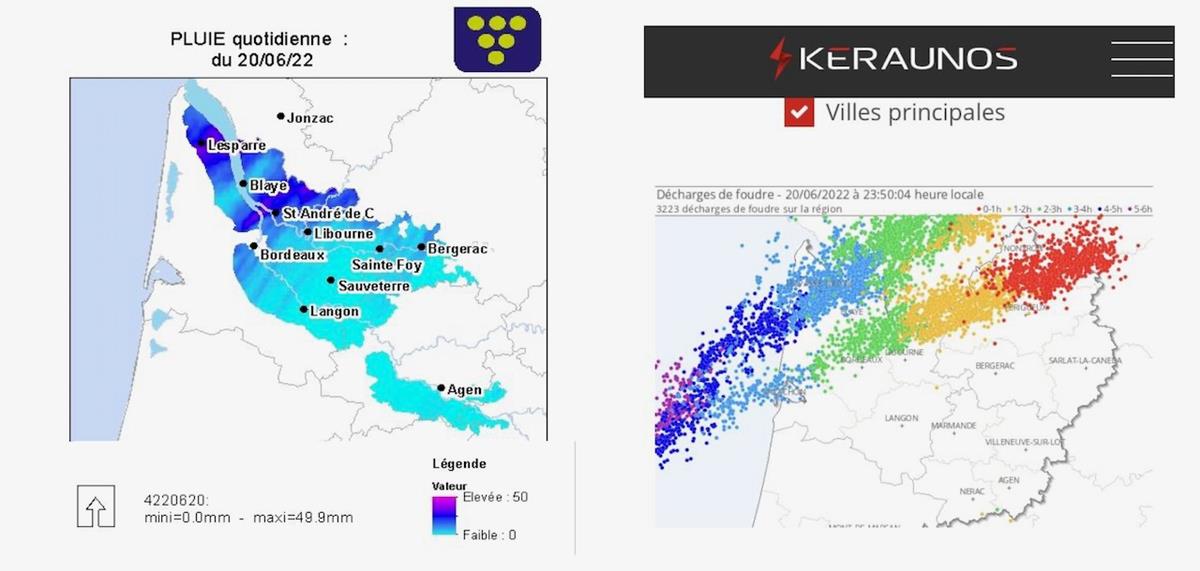
A report from the Chambre d’Agriculture de Gironde summarised the zones of impact.
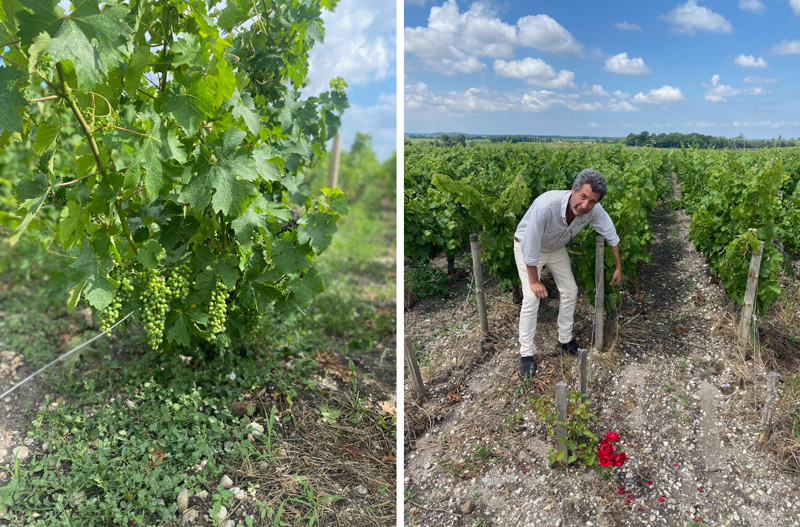
Whilst not wanting to mention the châteaux that were hit, it was good to see that many of the vines around St-Estèphe had remained untouched, such as the Cabernet Sauvignon at a top estate, left.
And I popped in for a coffee break with my friend Andrew McInnes at Domaines CGR in the Médoc, who was relieved to show off his Cabernet Sauvignon unscathed.
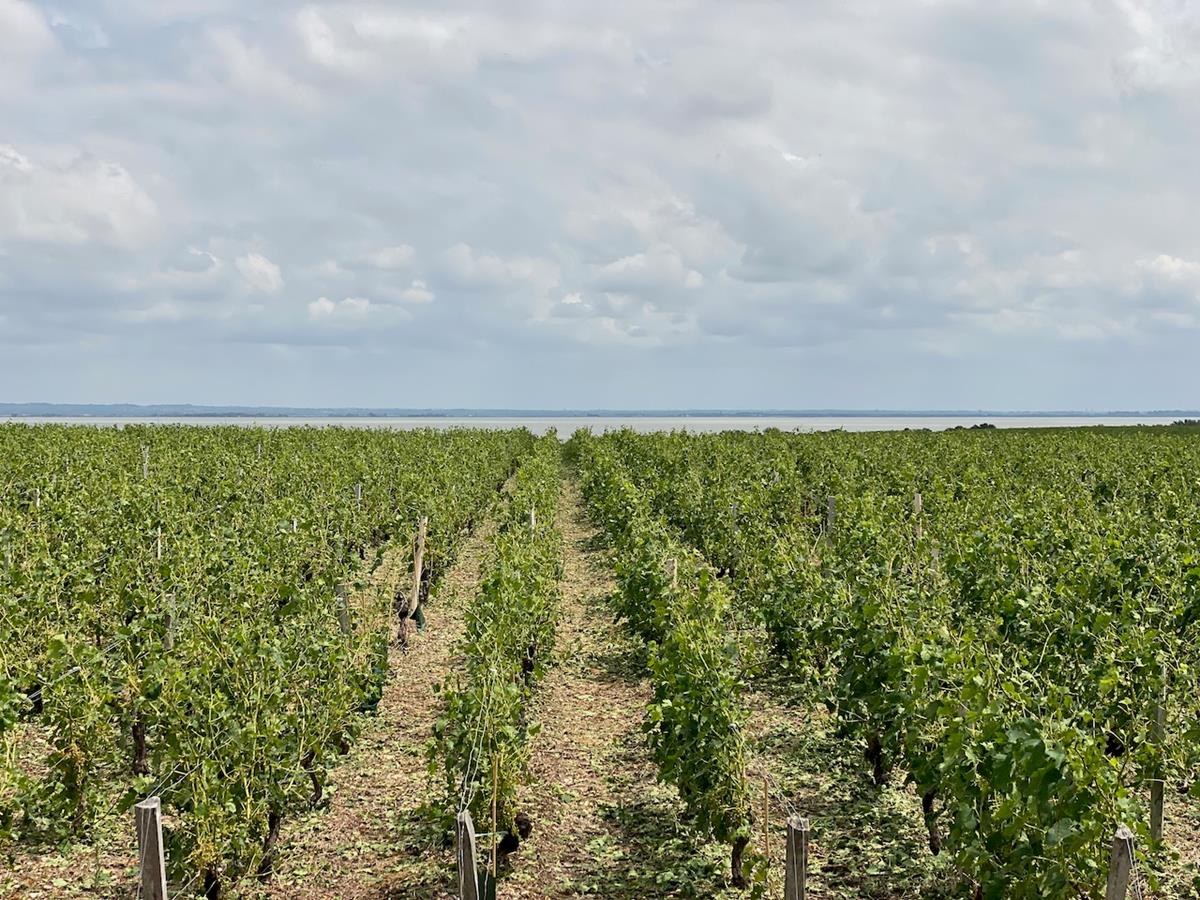
Hail damaged vines in the Haut-Médoc to the north of St-Estèphe near Saint-Seurin-de-Cardourne. The Gironde estuary lies beyond.
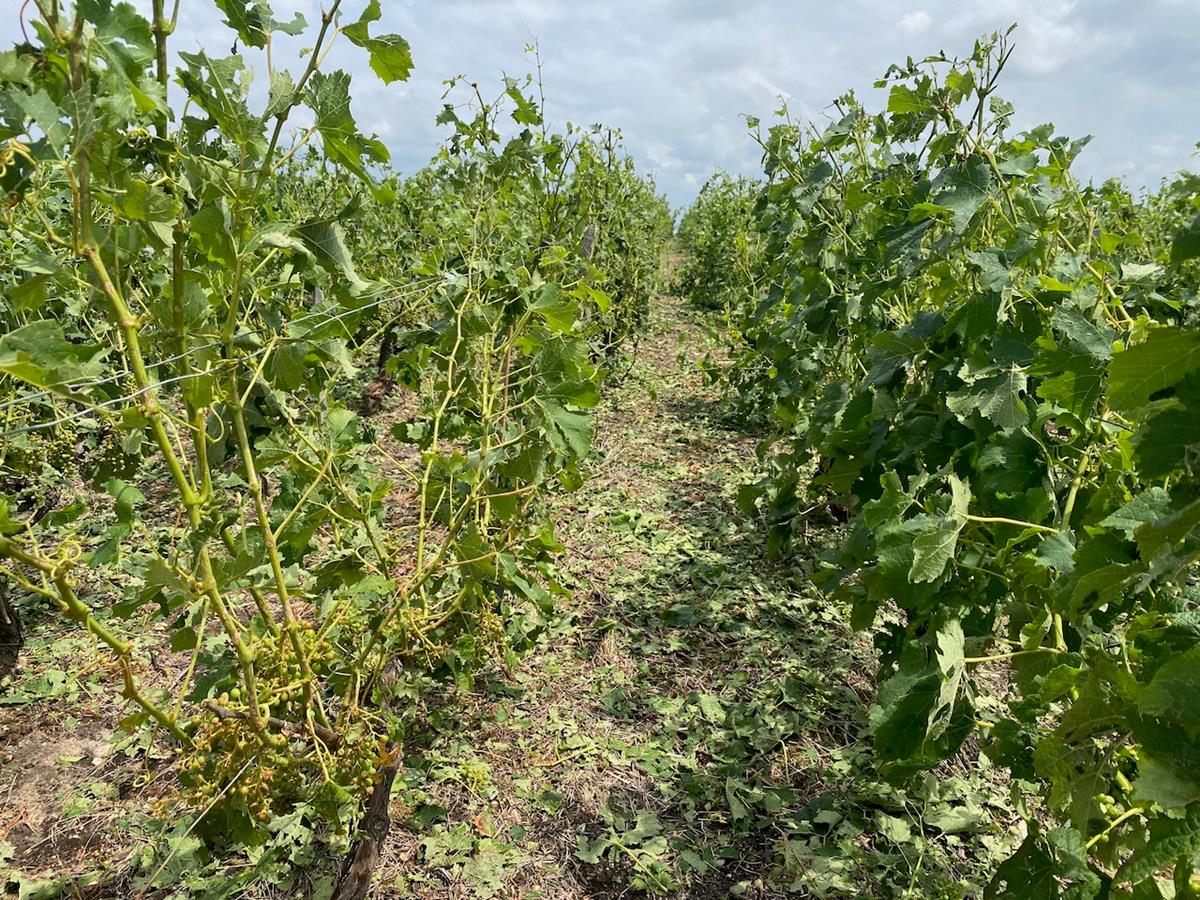
A closer view of the rows above. Unlikely for anything of any quality to be gathered for this harvest. Though it will be interesting to track it.
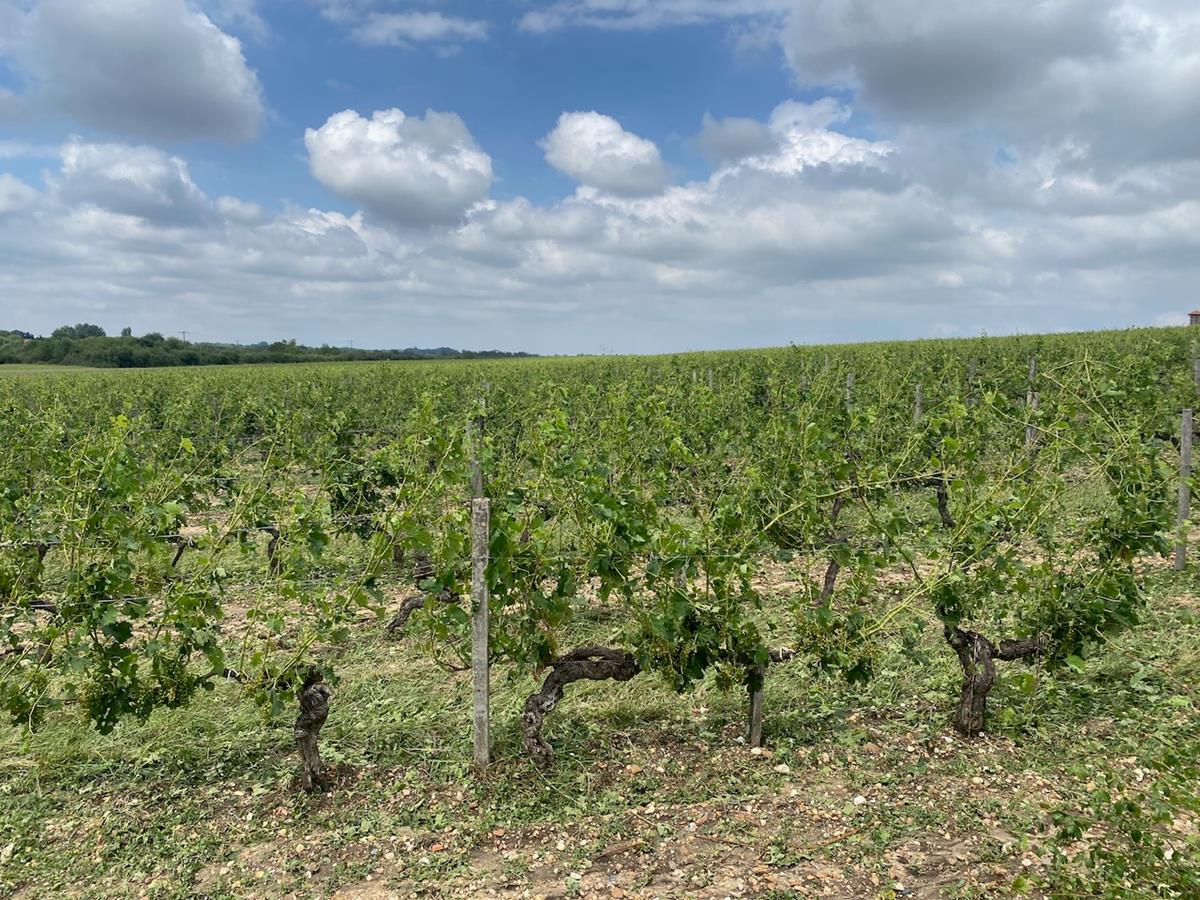
A well known estate in the Médoc appellation. Such a shame.
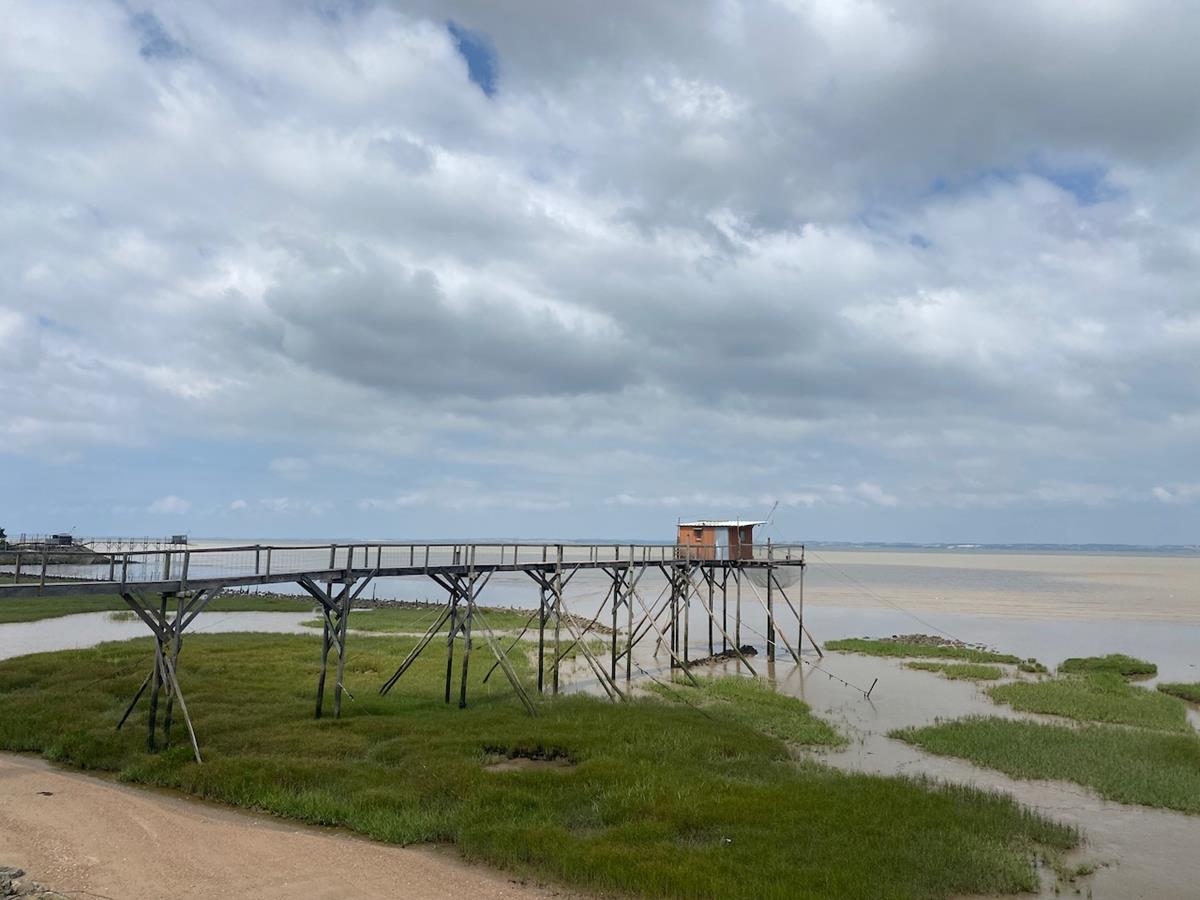
Further north in the Médoc appellation, where the Gironde estuary widens considerably, there was minimal damage.
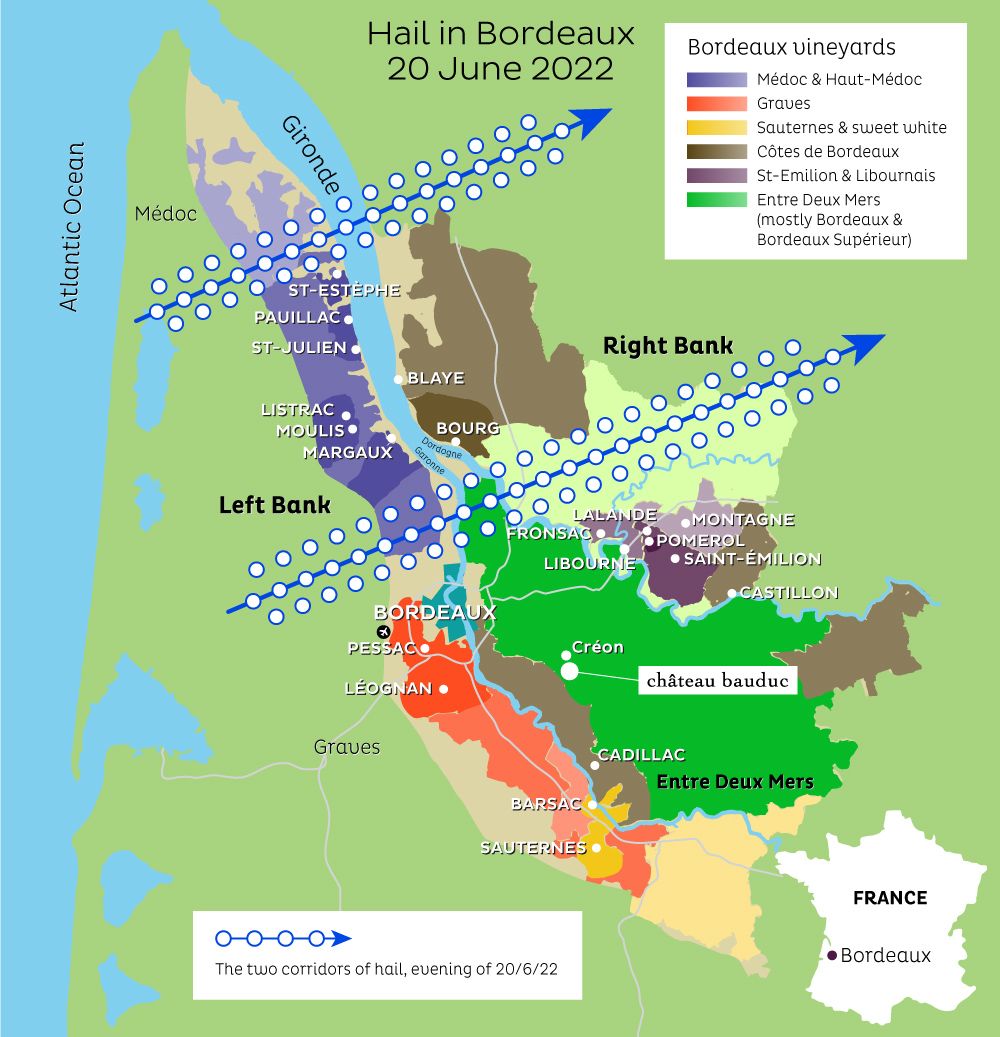
So it was clear by now that the two corridors of hail had swept across the Gironde to the north and another just north of the city, across the confluence of the Garonne and the Dordogne.
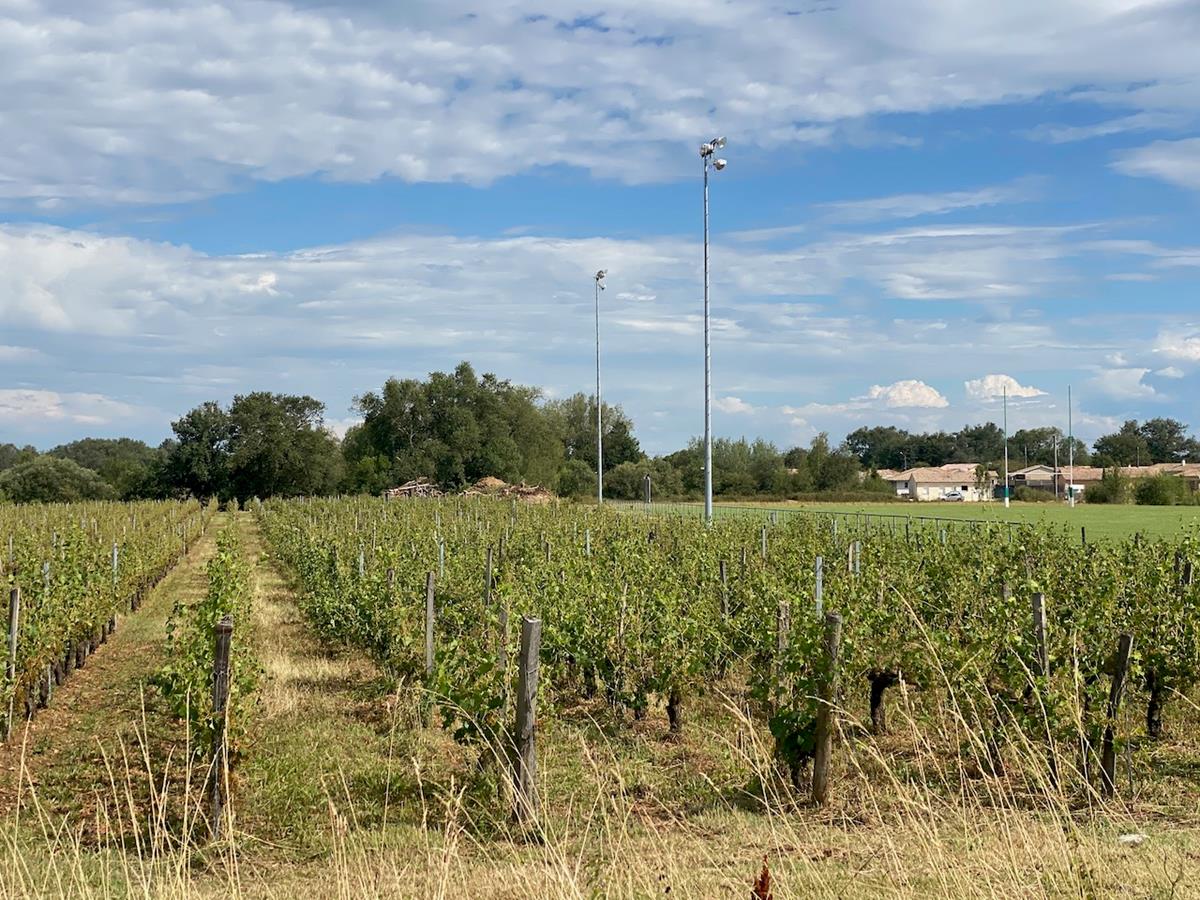
Large, localised areas of the right bank were hit. This is Galgon, near Fronsac.
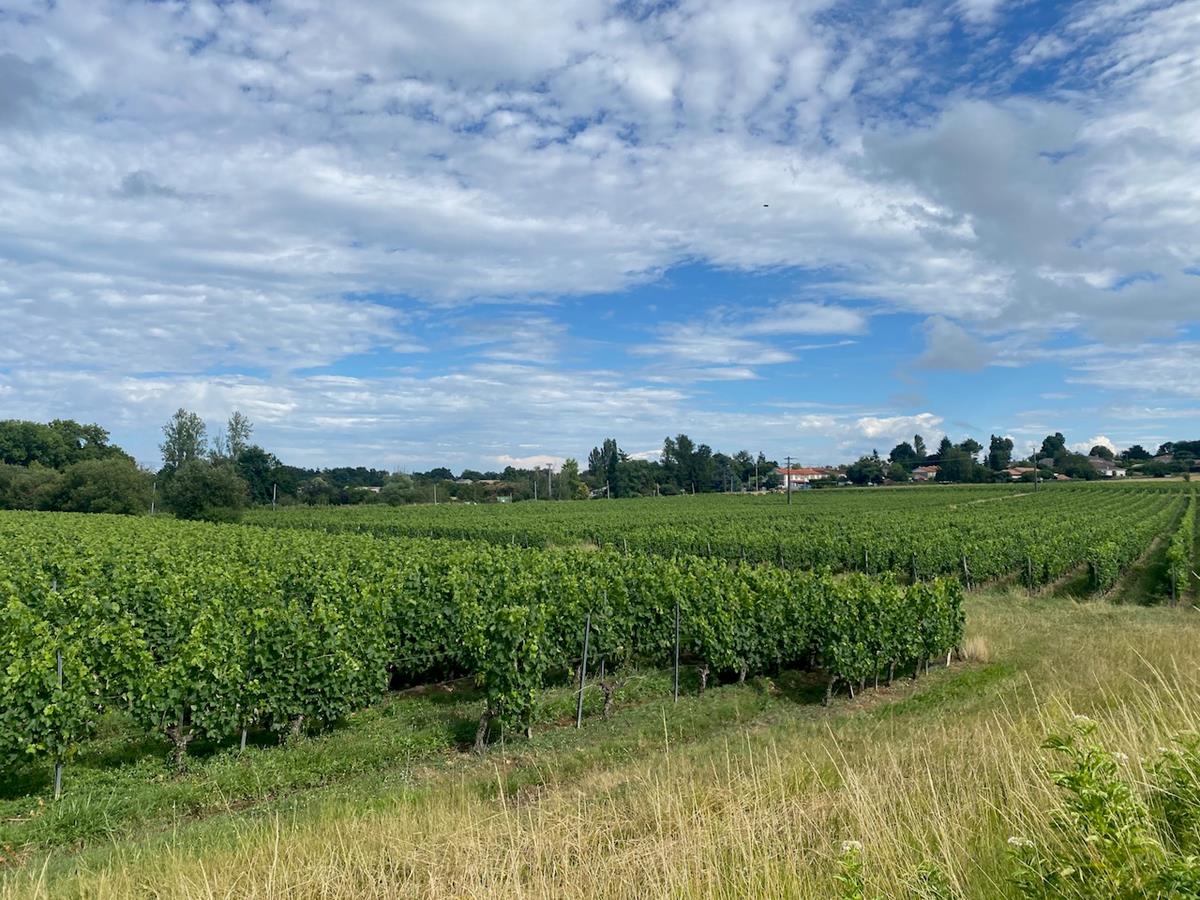
A few kilometres up the road, towards Villegouge, and the vines are untouched.
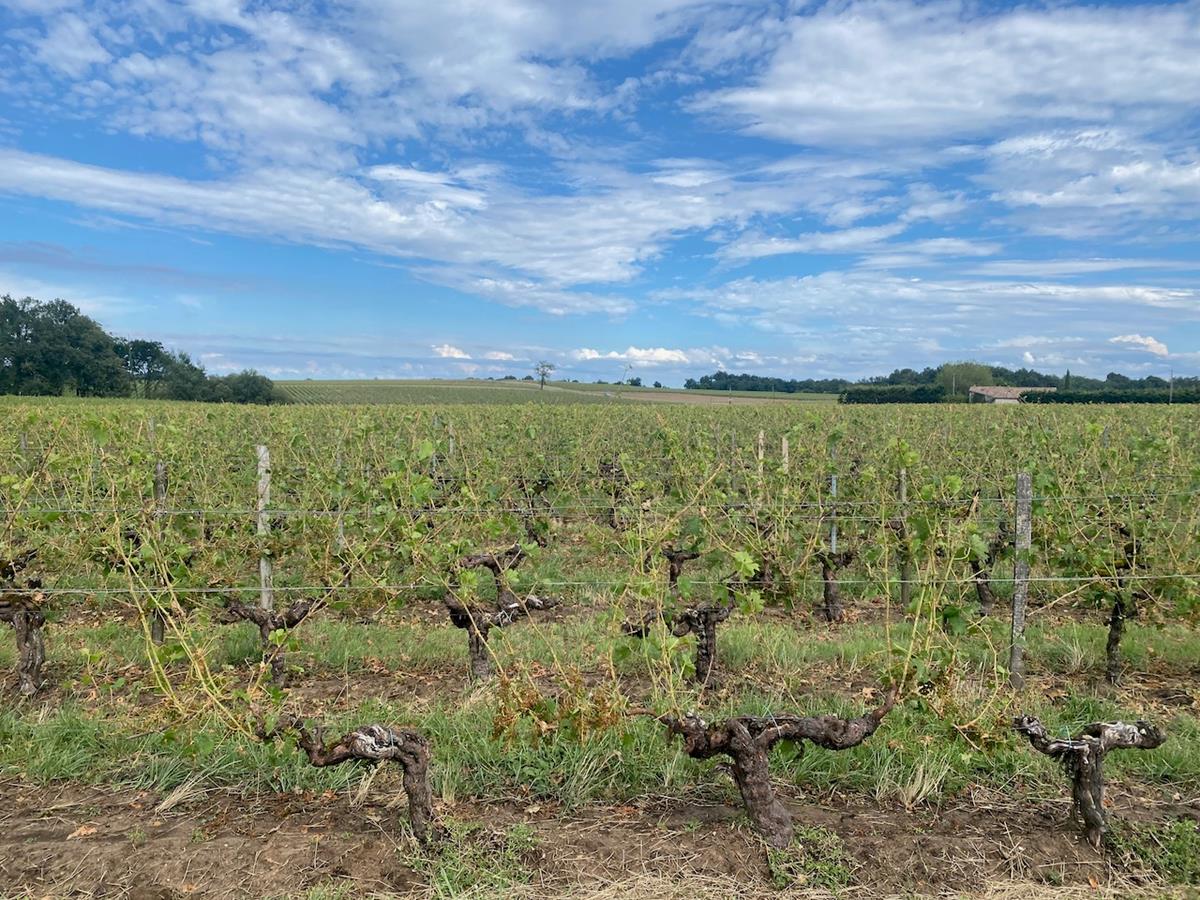
A Fronsac vineyard, between Saillans and Galgon. Other Fronsac vineyards fared better.
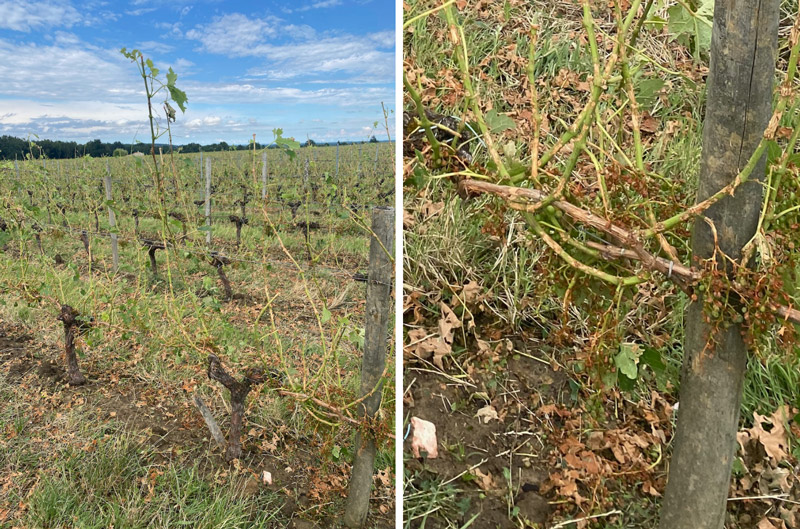
The close up on the right shows the level of impact. 100% loss, undoubtedly.
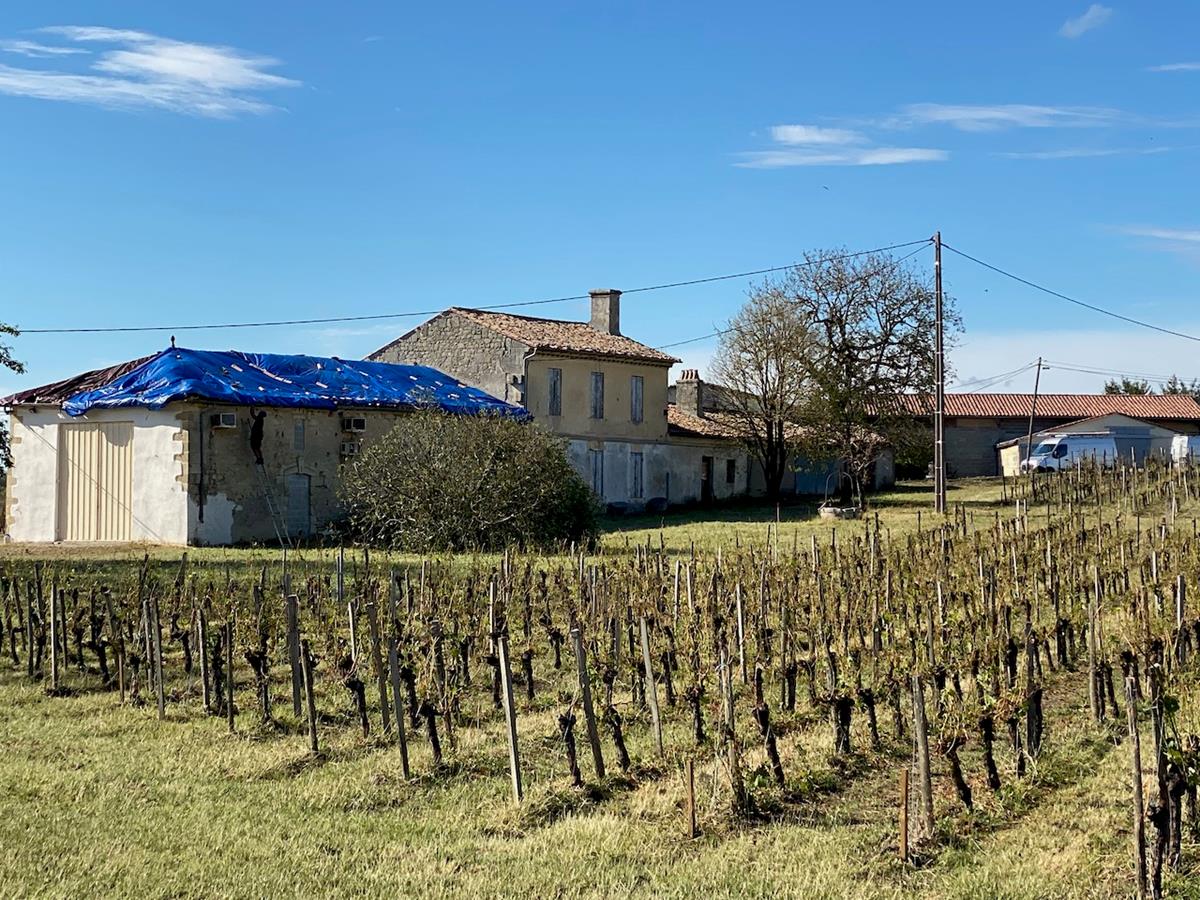
‘100% loss? If the growers of the vines I’ve seen on the news are saying they’ve lost 100%, then we’ve lost 200%. Maybe 300%’. One grower’s reaction at Saint-Gervais, south of Bourg.
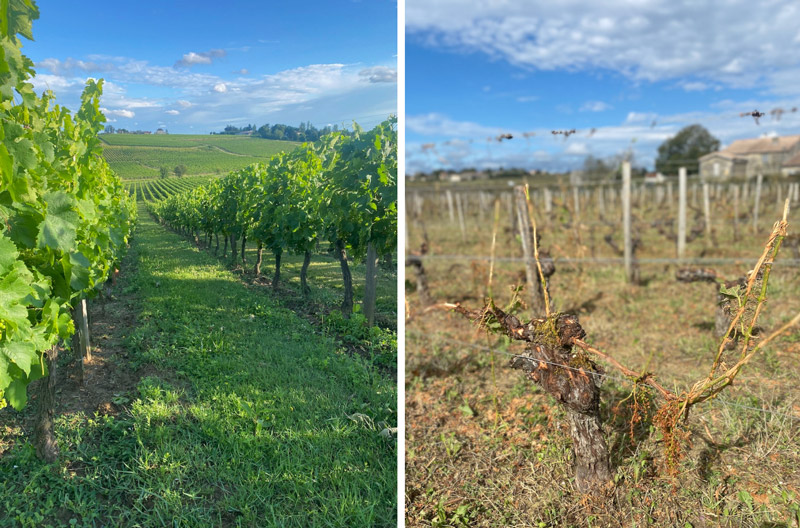
Comparing vines a few kilometres apart, near Bourg and Saint-Gervais.
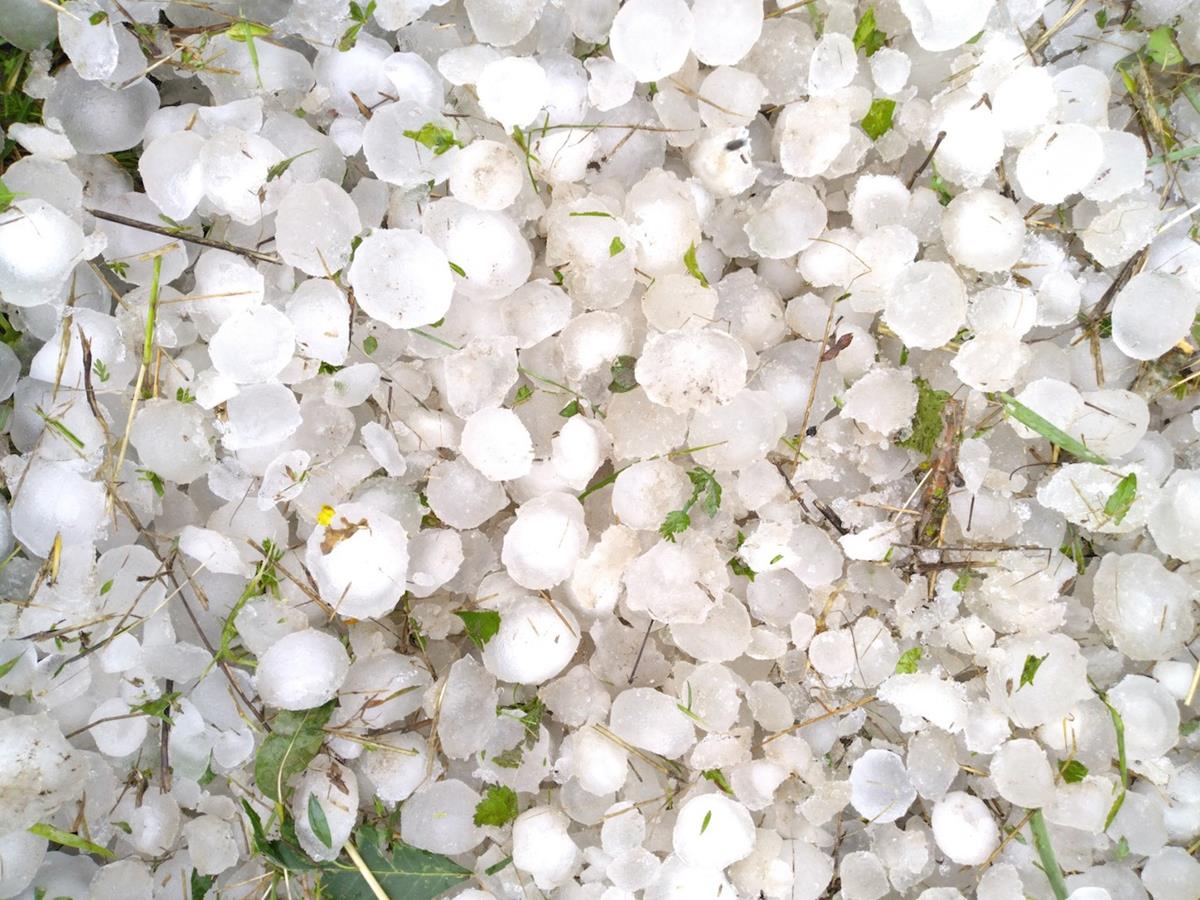
This photo of the hail in the vines here was taken the morning after the storm. The poor grower who gave me this image onsite had lost 32 hectares out of 37.
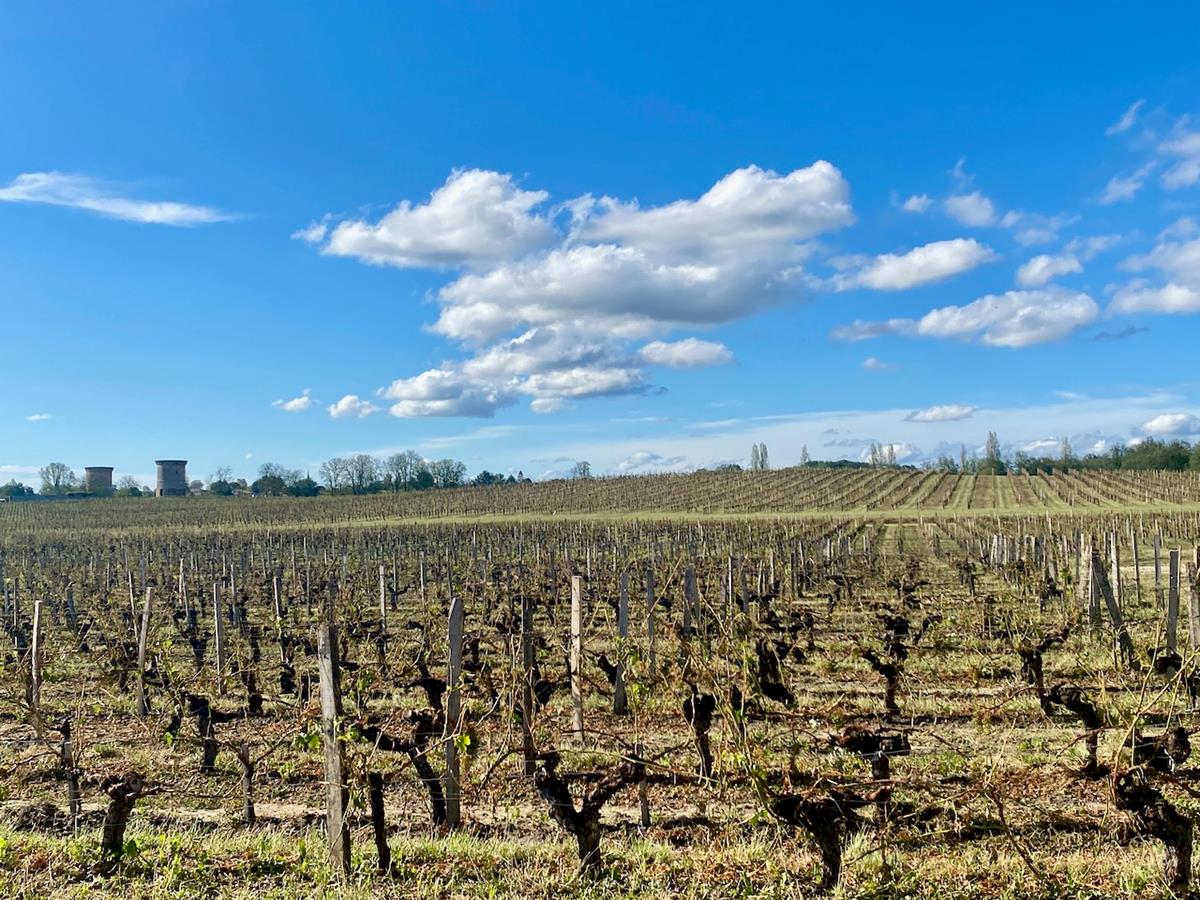
The whole valley below Saint-Gervais is a sight to behold. Indeed, this year’s crop – and probably next year’s – has been lost.
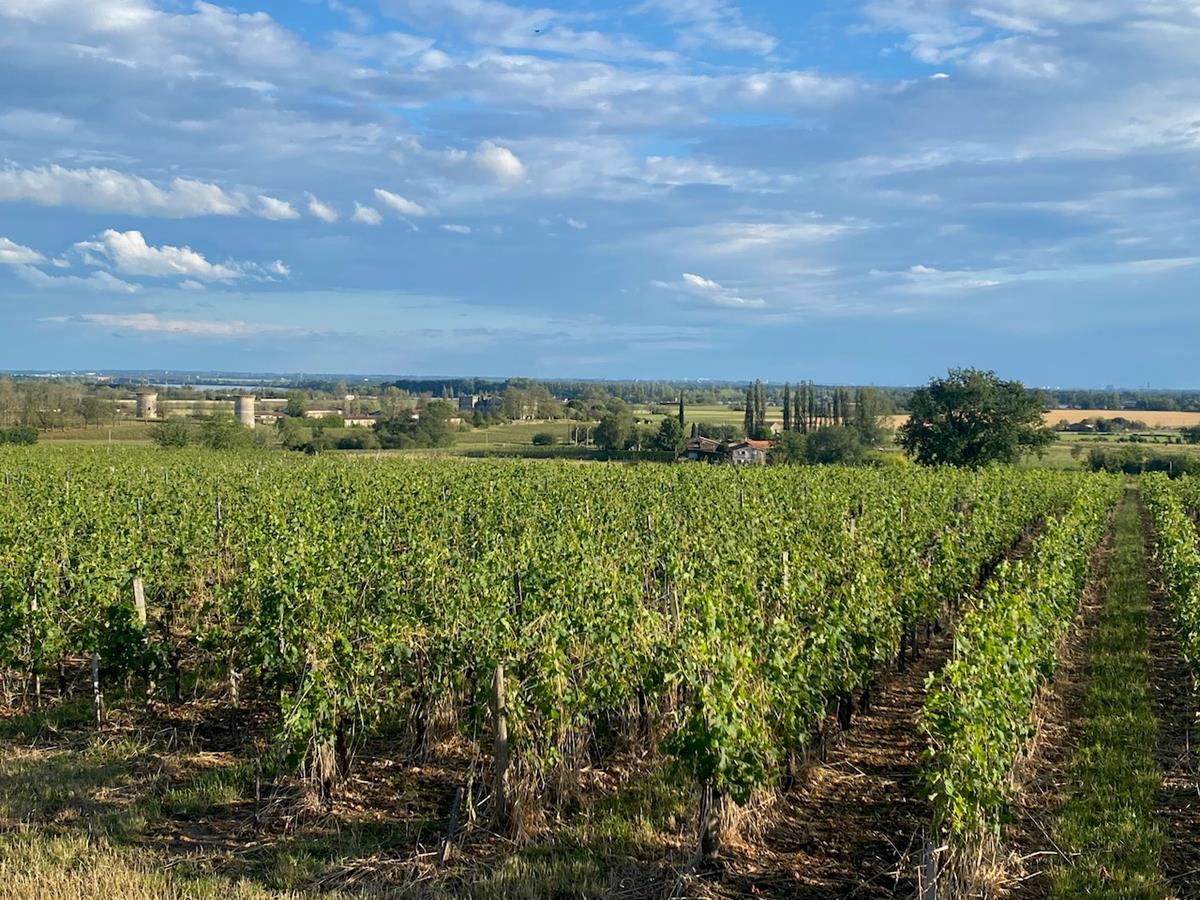
Further up the hill, the losses went from total to around half, to marginal. Note the same two towers on the left of this photo, and the same two in the image above.
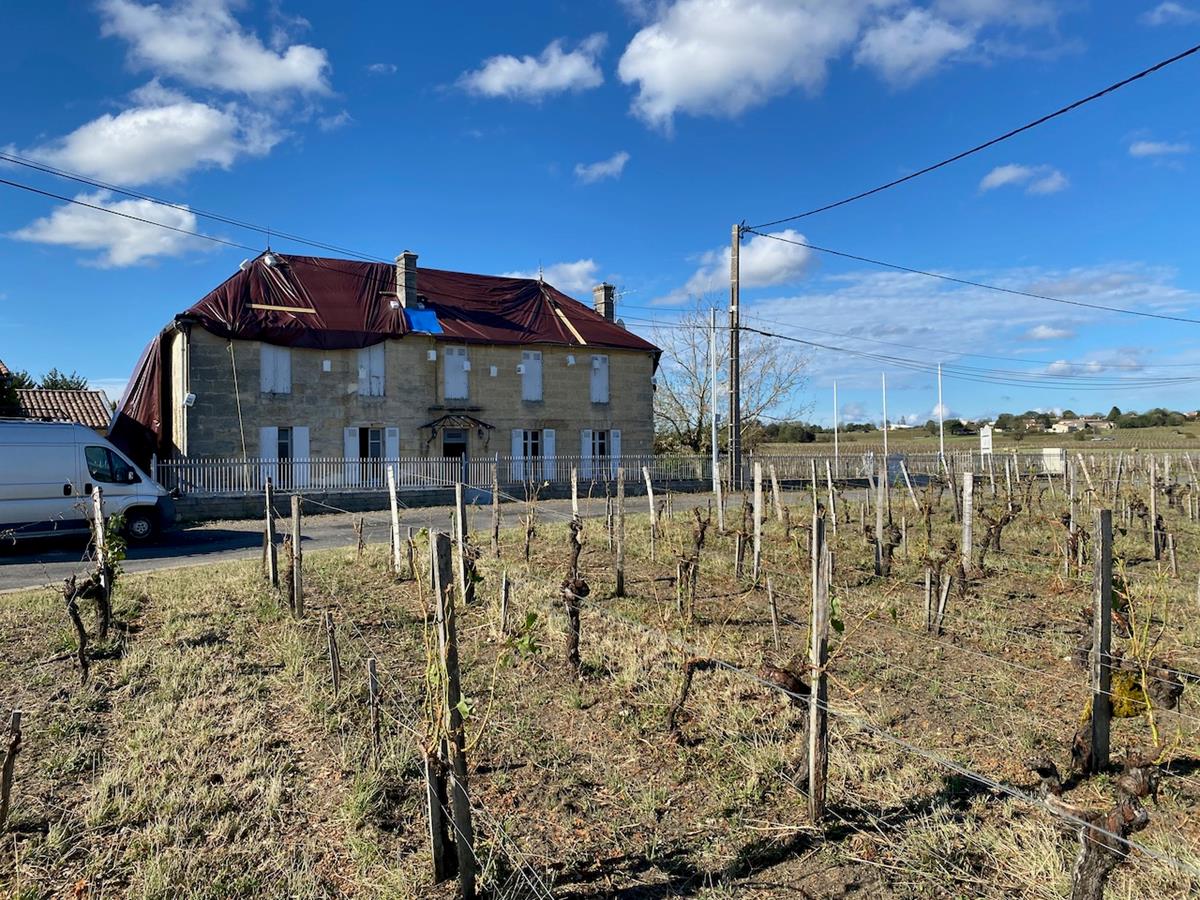
Weighted pots holding down the temporary tarpaulin over the hail-damaged roof.
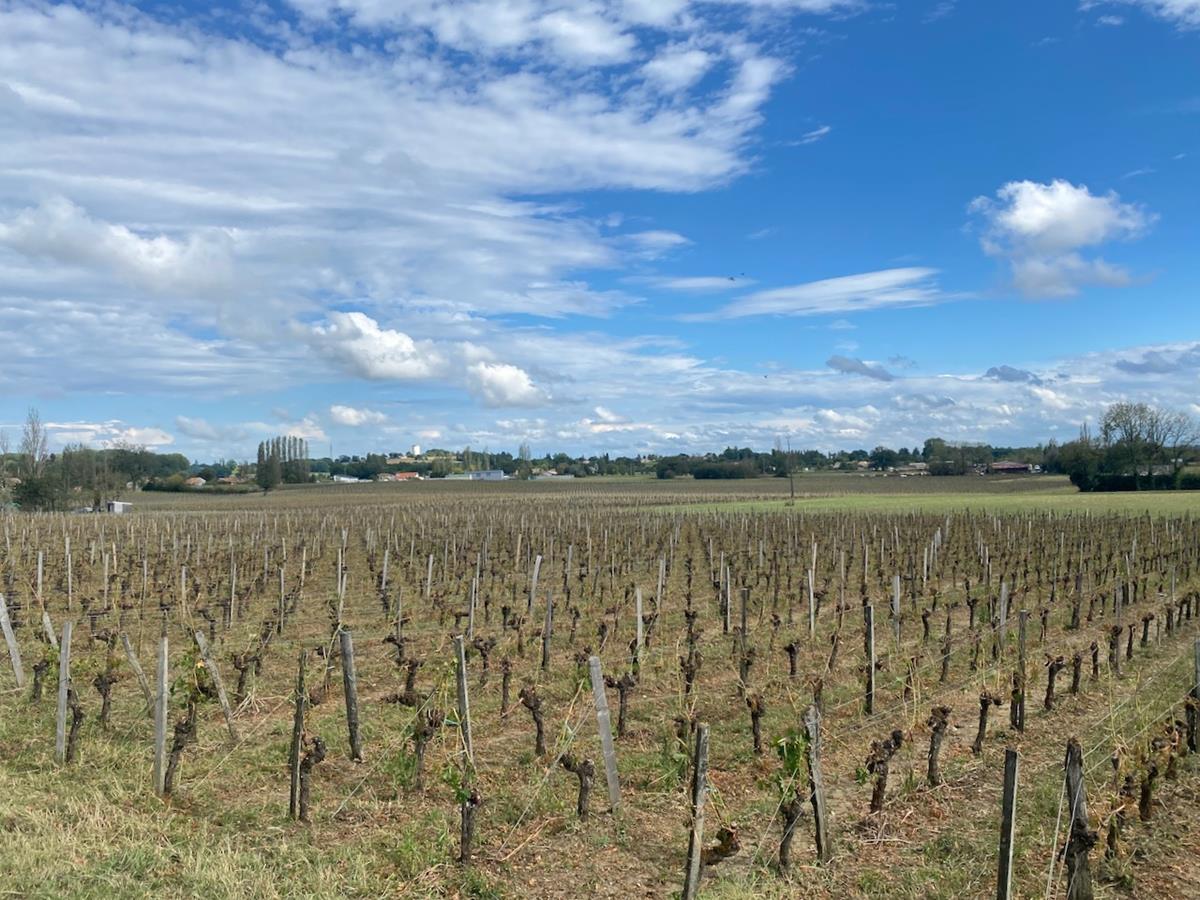
The damaged zones went far beyond these vines. However, I would estimate that no more than 10% of the Bordeaux vineyard has been impacted and with a healthy crop elsewhere in the region overall production for Bordeaux is unlikely to be lower. Not that this is any consolation for those whose livelihood is on the line.
At some point, I’ll put together a potted history of hail this century around Bordeaux, and what measures are being taken.

